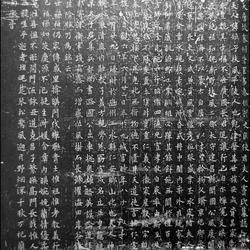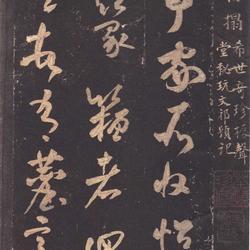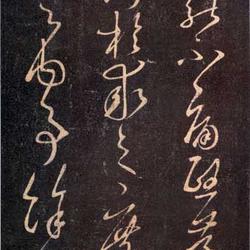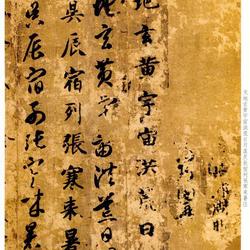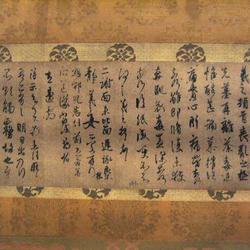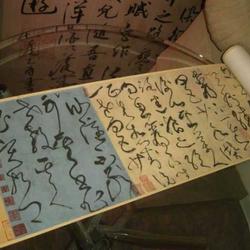Yu Shinan, the second year of Chen Yongding (558 AD) - the twelfth year of Zhenguan of the Tang Dynasty (638 AD), named Bo Shi, was born in Yuyao, Kuaiji, and served as the official secretary to the supervised Yongxing Gong. Calligraphy is as famous as Ouyang Xun, and is also called "Ou Yu", or he and Ouyang Xun, Chu Suiliang, and Xue Ji are the four great masters of the early Tang Dynasty.
"The Temple Stele of Confucius" was written and written by Yu Shinan and is his most famous masterpiece. The original stele was erected in the seventh year of Zhenguan in the Tang Dynasty (633). The monument is 280 cm high and 110 cm wide, with 35 lines of regular script and 64 characters per line. On the forehead of the stele, there are six characters "Stele of Confucius Temple" in seal script. The inscription records that in the fifth year of Emperor Gaozu of the Tang Dynasty, Kong Delun, the 23rd descendant of Confucius, was conferred the title of Blessed Saint Marquis and the renovation of the Confucius Temple. It was written by Yu Shinan when he was sixty-nine years old. The writing style of this stele is round, strong and elegant, plain and dignified, the brushwork is stretched, the brushwork is subtle and simple, the breath is quiet and deep, and it has a peaceful and upright atmosphere. It is a masterpiece among the stele inscriptions of the early Tang Dynasty, and is also recognized by epigraphers and calligraphers of all ages as the wonder of Yu's calligraphy. Taste. "Only dozens of pieces of paper were copied and given to close ministers" (Yang Bin's "Da Lao Oupi Brush" of the Qing Dynasty). It is said that after the stele was inscribed, the horses and chariots gathered under the stele and beat the sun. Not long after the fire burned down, in the third year of Wu Zhou Chang'an (703), Wu Zetian ordered Li Dan, the prime minister, to carve it again and then destroy it.Rubbings carved from the Tang Dynasty are rare today.
There are three types of rubbings: (1) The engraving version copied by Wang Yanchao in the Song Dynasty. Because the stone was in Xi'an, Shaanxi Province, it is called the "Ximiaotang Stele" (also known as the Shaanxi version), and the handwriting is plump and smooth. (2) The copy from the Yuan Dynasty to the Yuan Dynasty was called the "East Temple Hall Stele" (also known as the Chengwu Edition) because the stone was in Chengwu, Shandong, and the handwriting was thin and hard. (3) The copy collected by Li Zonghan in Linchuan during the Qing Dynasty was originally collected by Kangli in the Yuan Dynasty. It is said that the two temples in the east and west were initially combined into one book. However, there are many discrepancies between the strokes and the paintings in the two temples. According to the "Essay on Supplementary School Stele", "If it is not the original stone, it is the stone re-engraved by Xiang Wangdan." This rubbing is called one of the "Four Treasures of Linchuan" and is in Japan today.Now in Mitsui Bunko, Tokyo, Japan.In addition, it is said that there are Qufu edition and Raozhou Jingjiang Academy edition, neither of which have been passed down to us today. According to these three editions, we collated each other and consulted with other engraving editions of Yu calligraphy to correct their defects and make an "enlarged edition with no missing characters", or It can express the original carving style of Yu Shinan's book. Huang Tingjian of the Song Dynasty wrote a poem praising: "The Zhenguan engraving in Yushu's temple can be purchased with a thousand taels of gold."
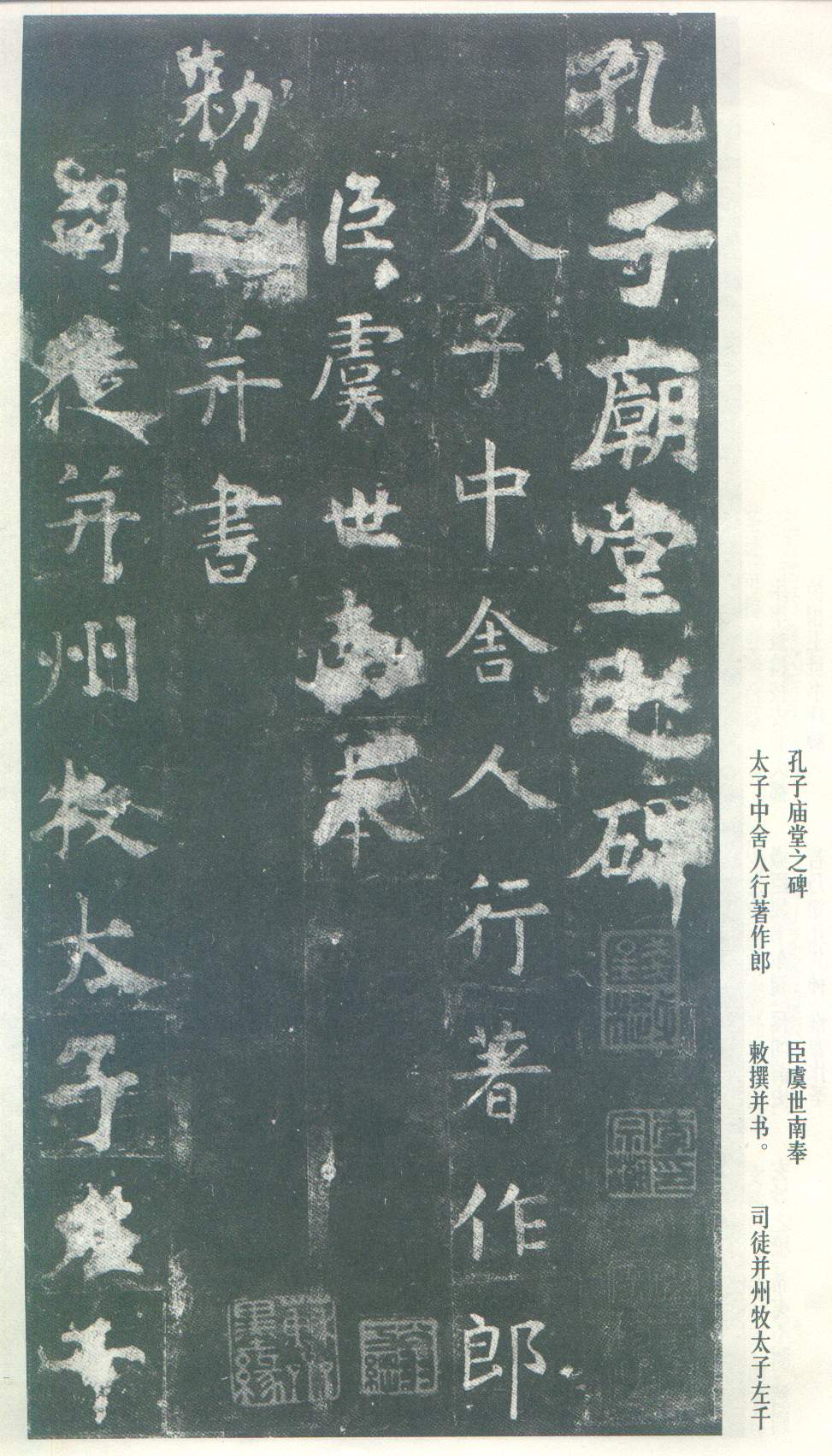
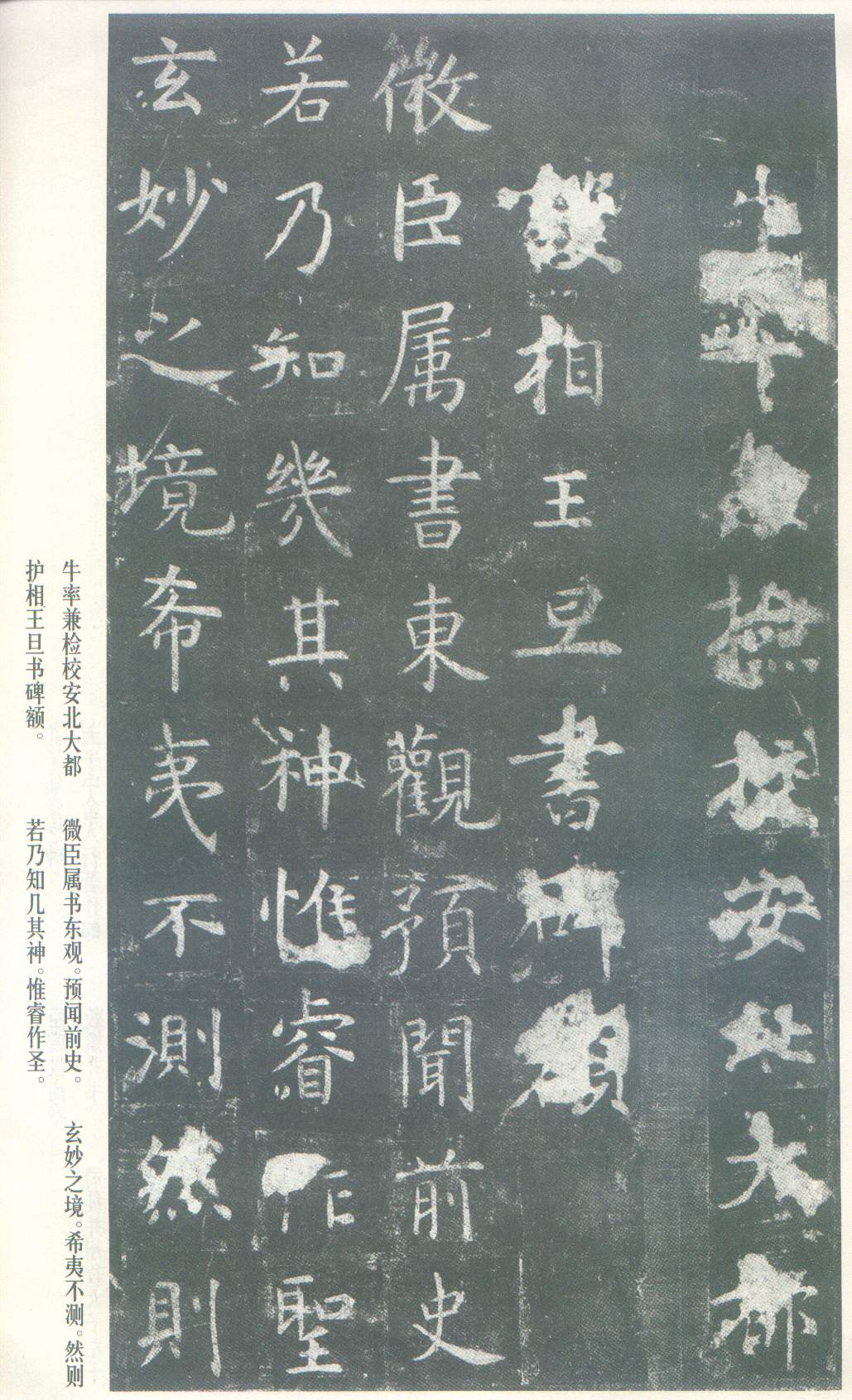
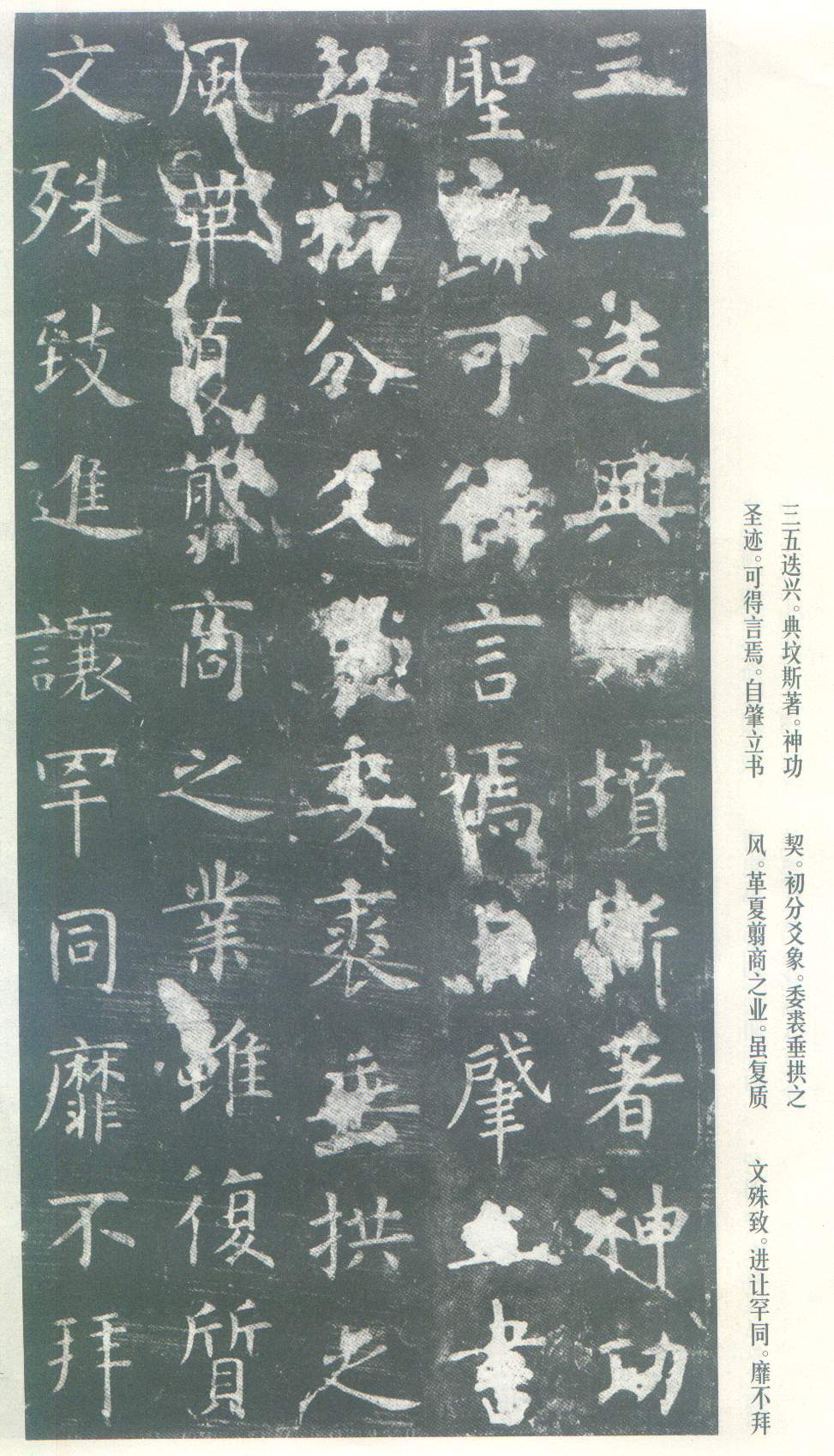
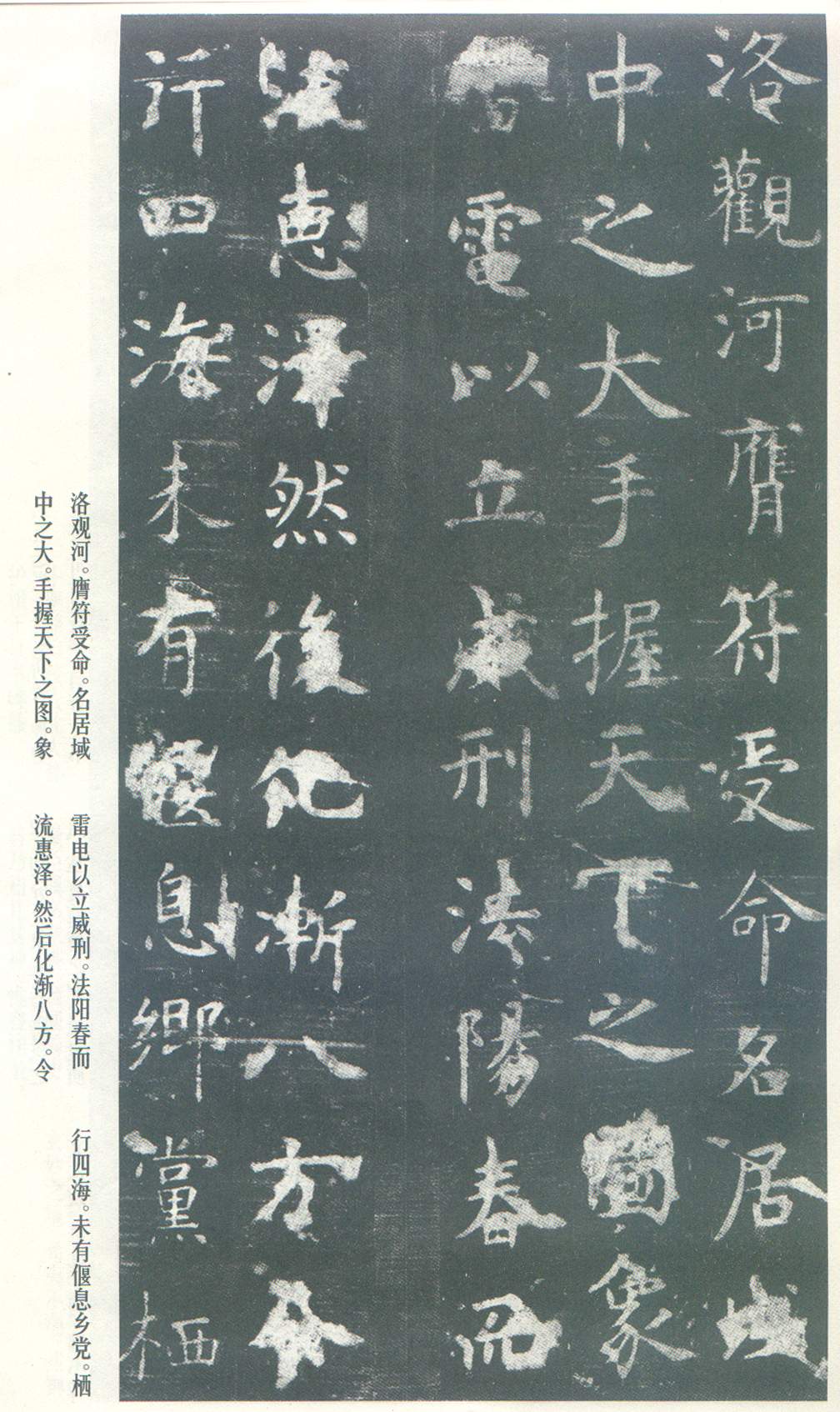
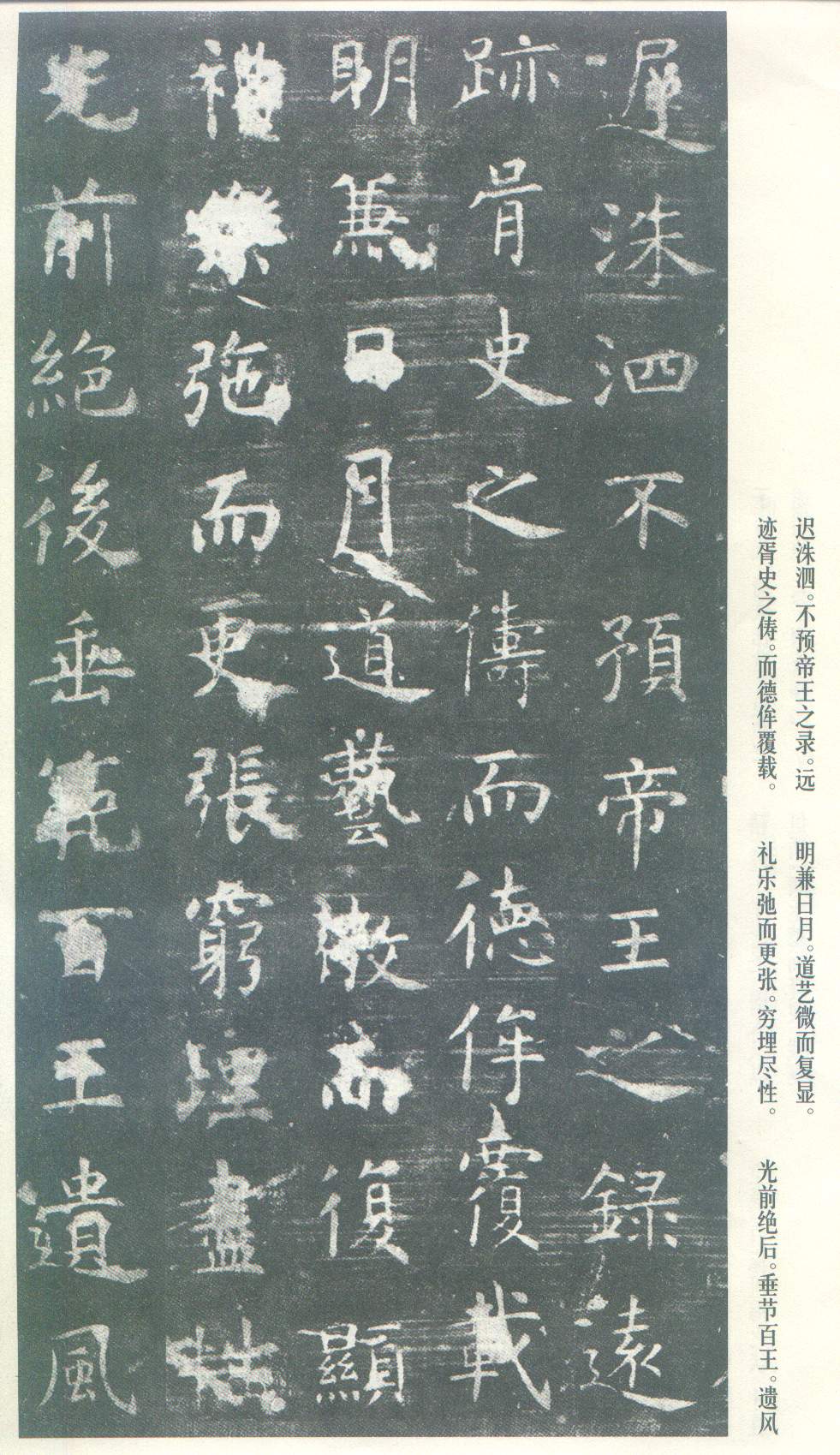
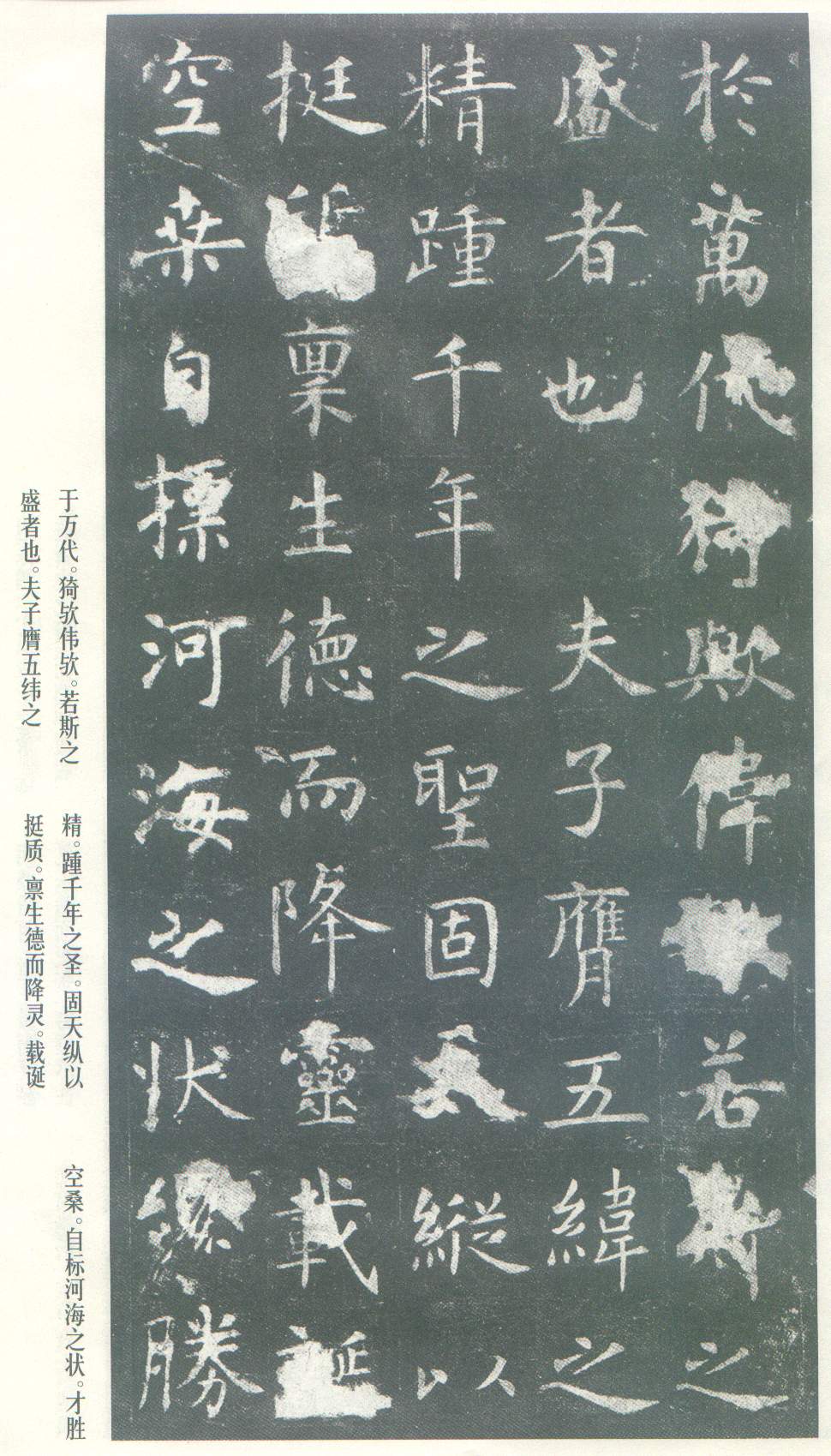
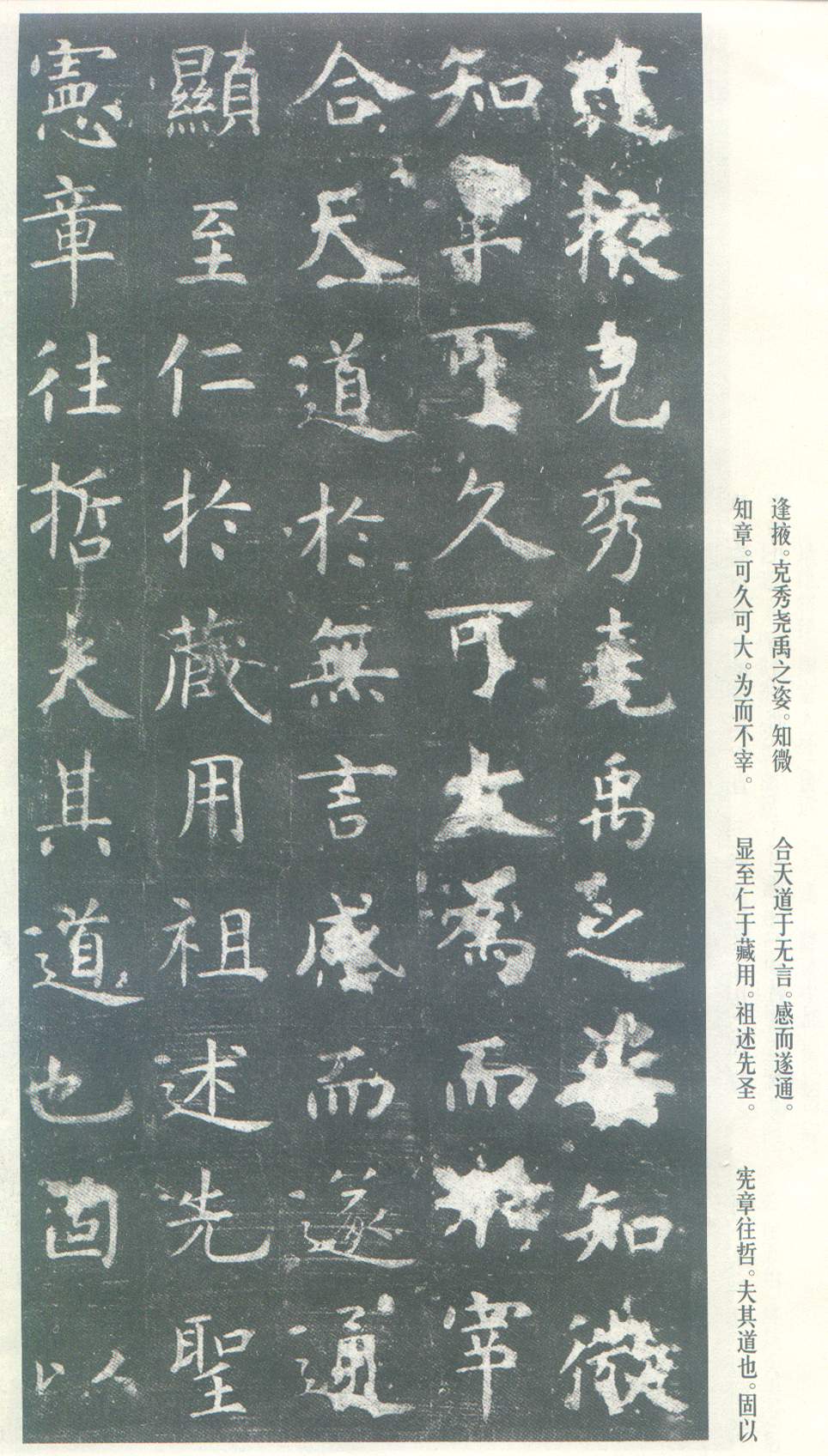
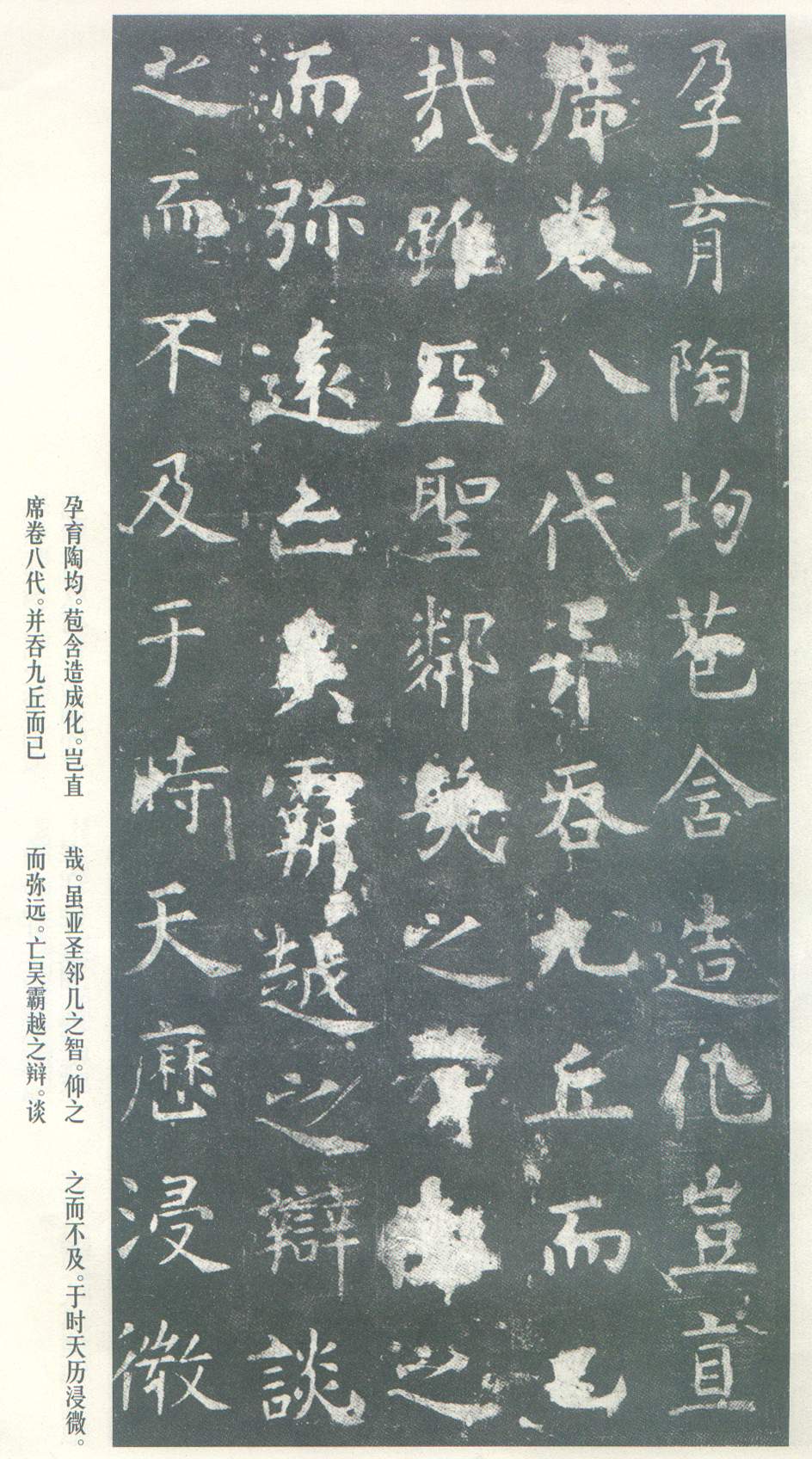
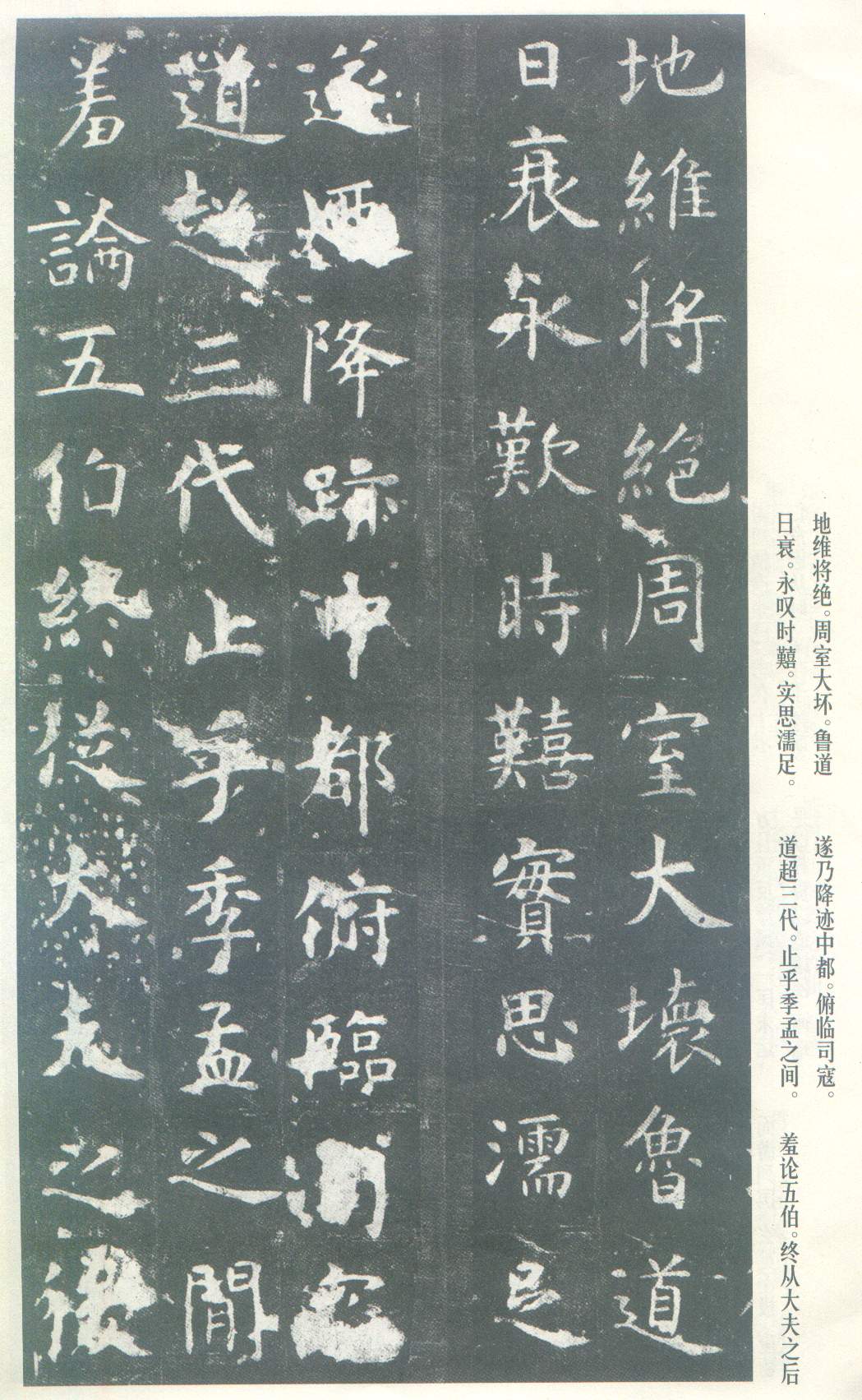
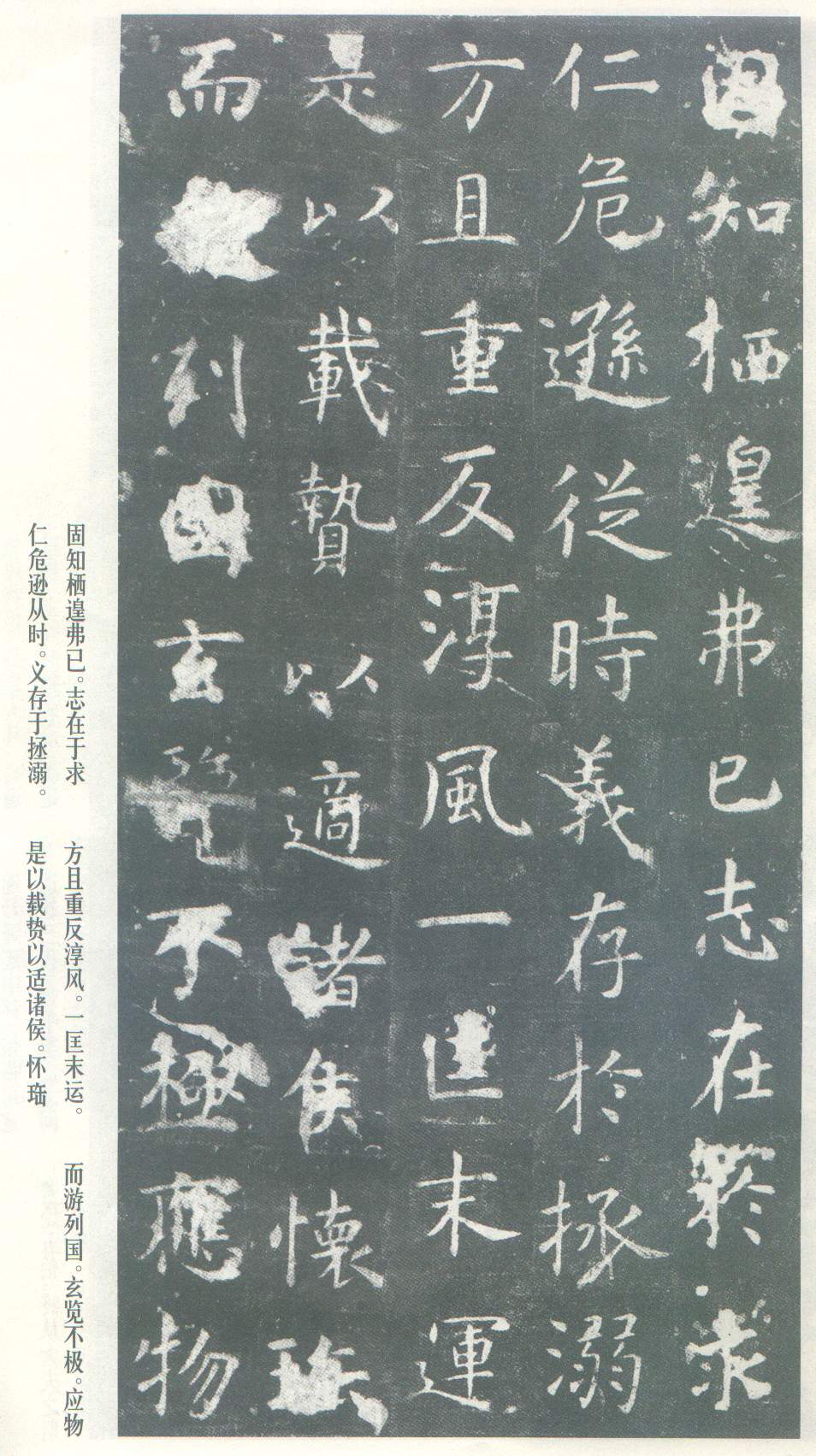
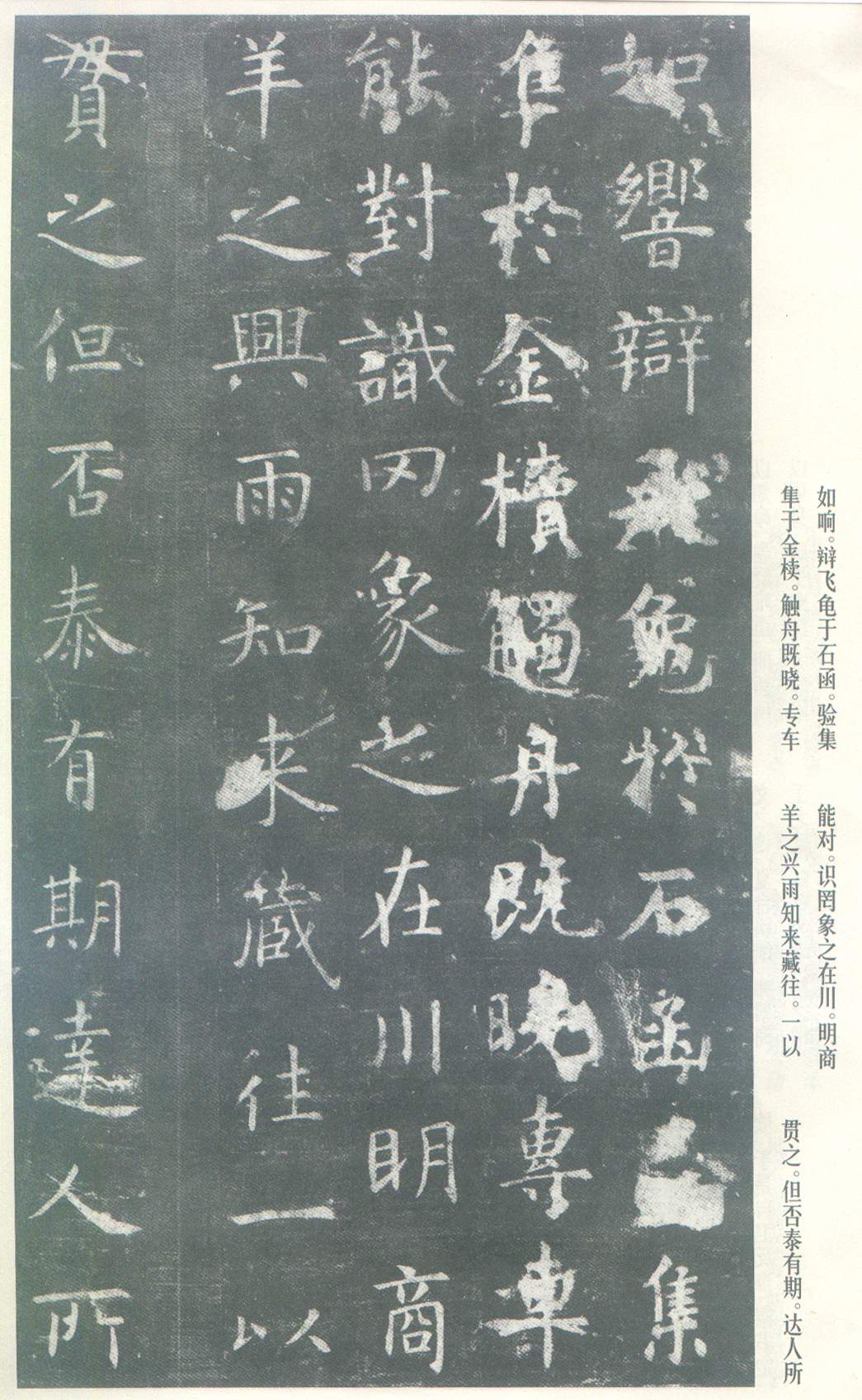
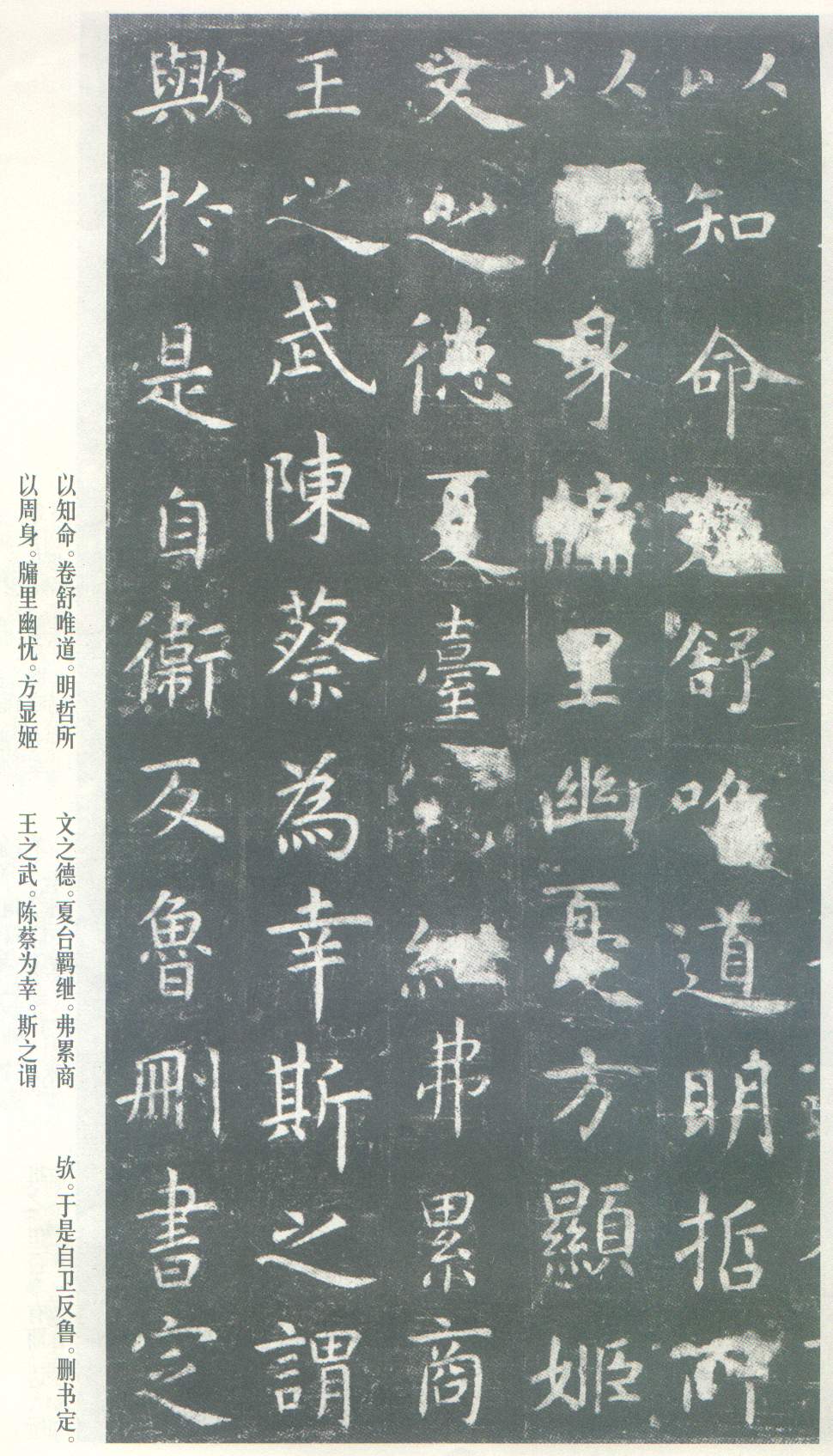
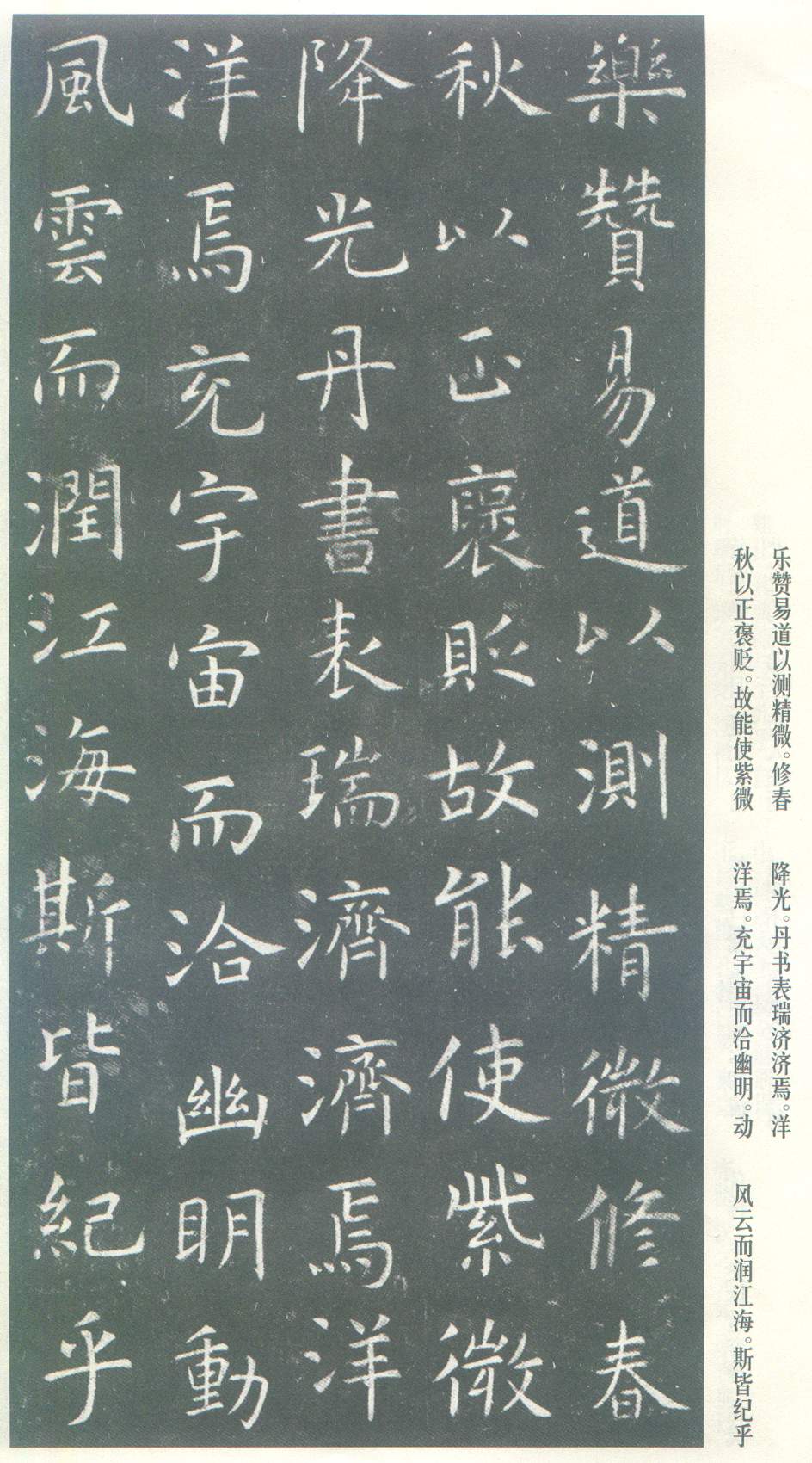
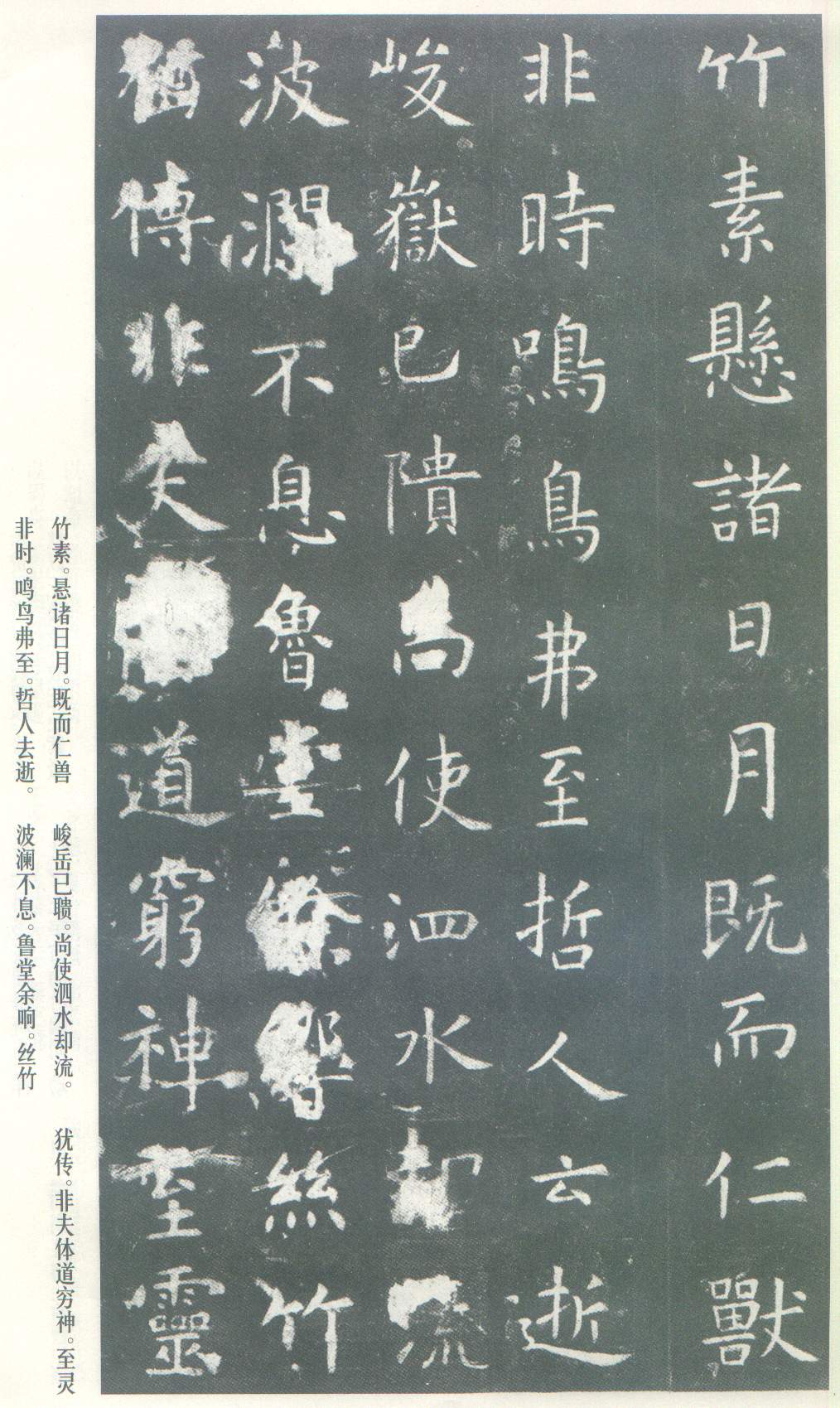
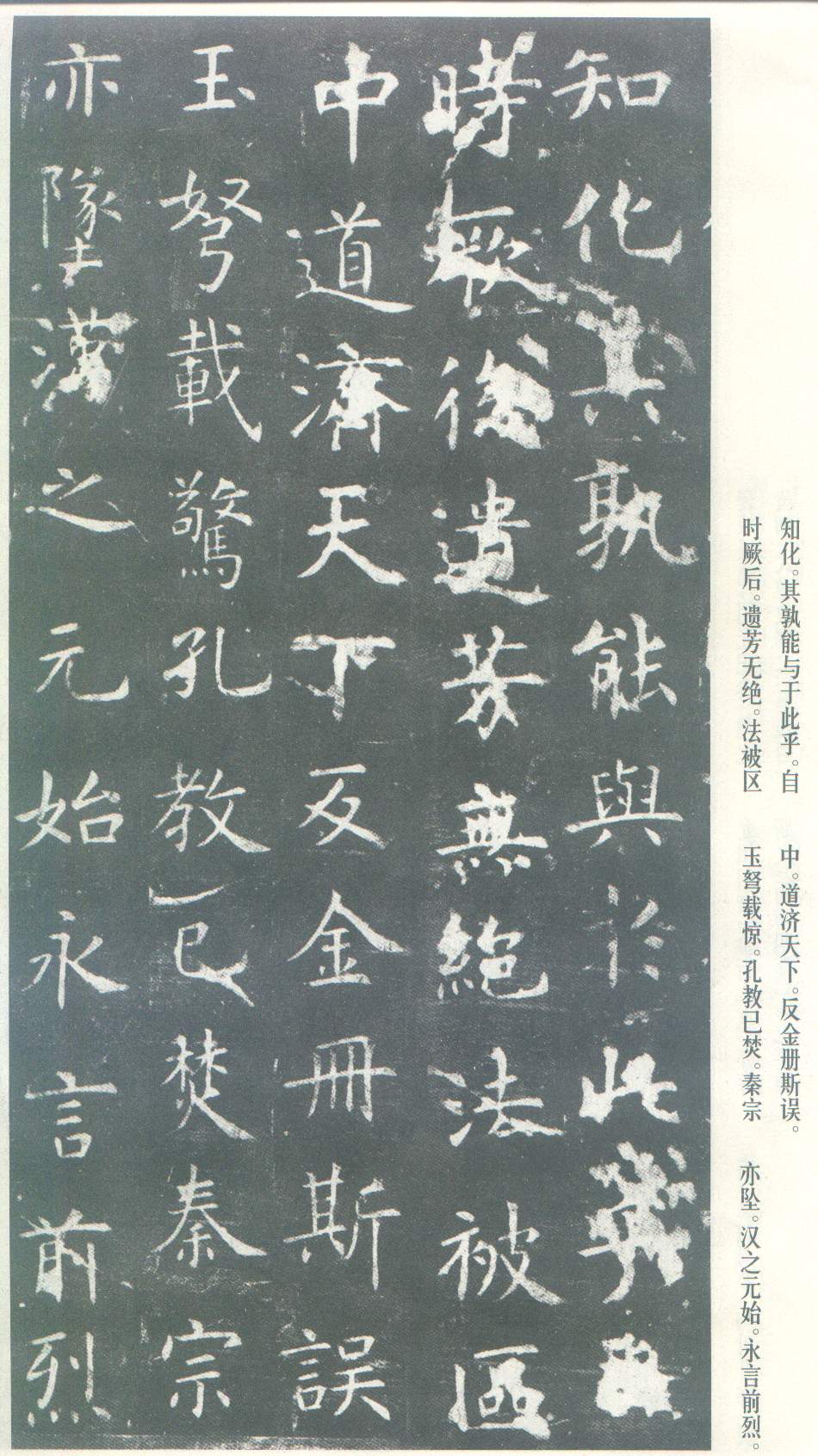
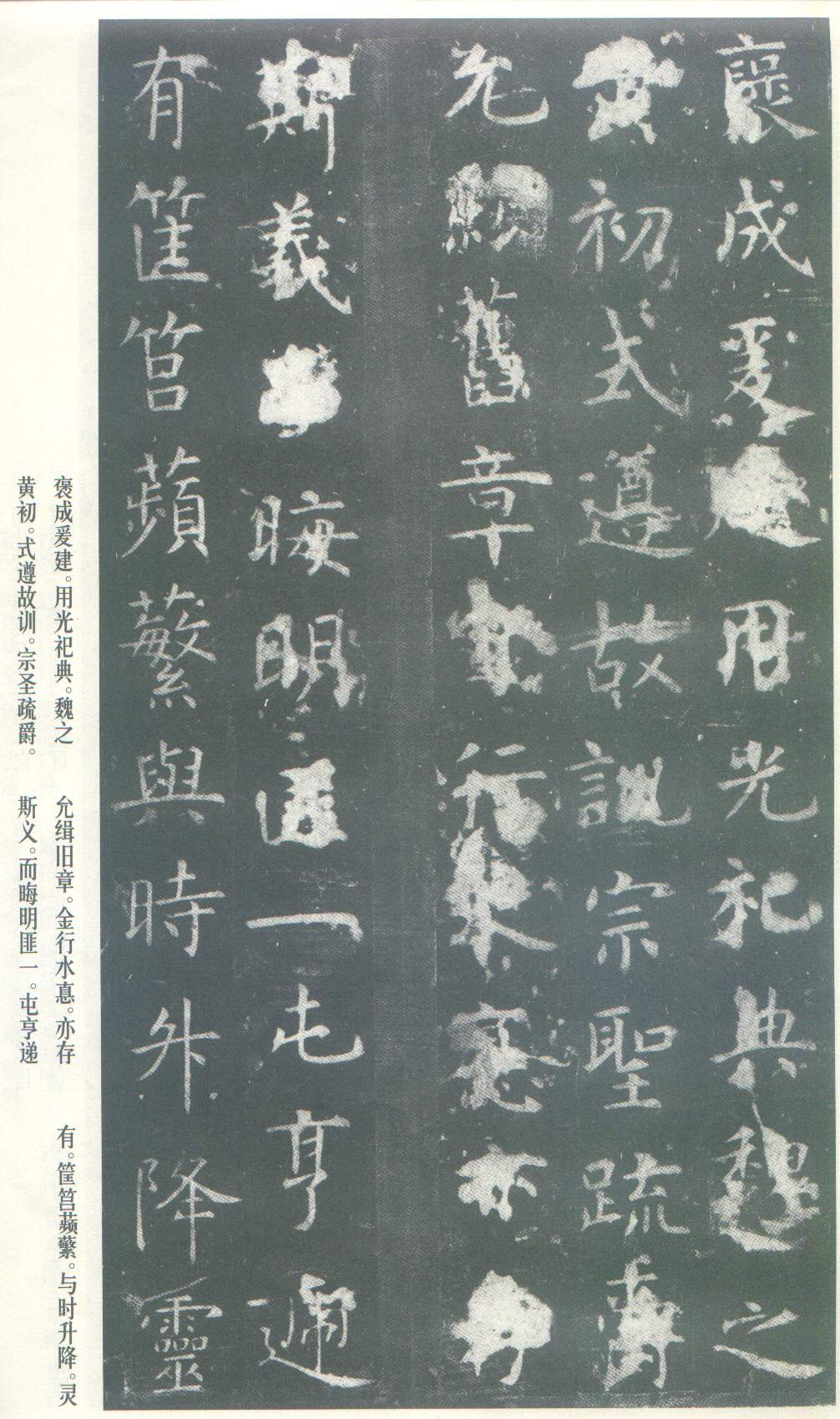
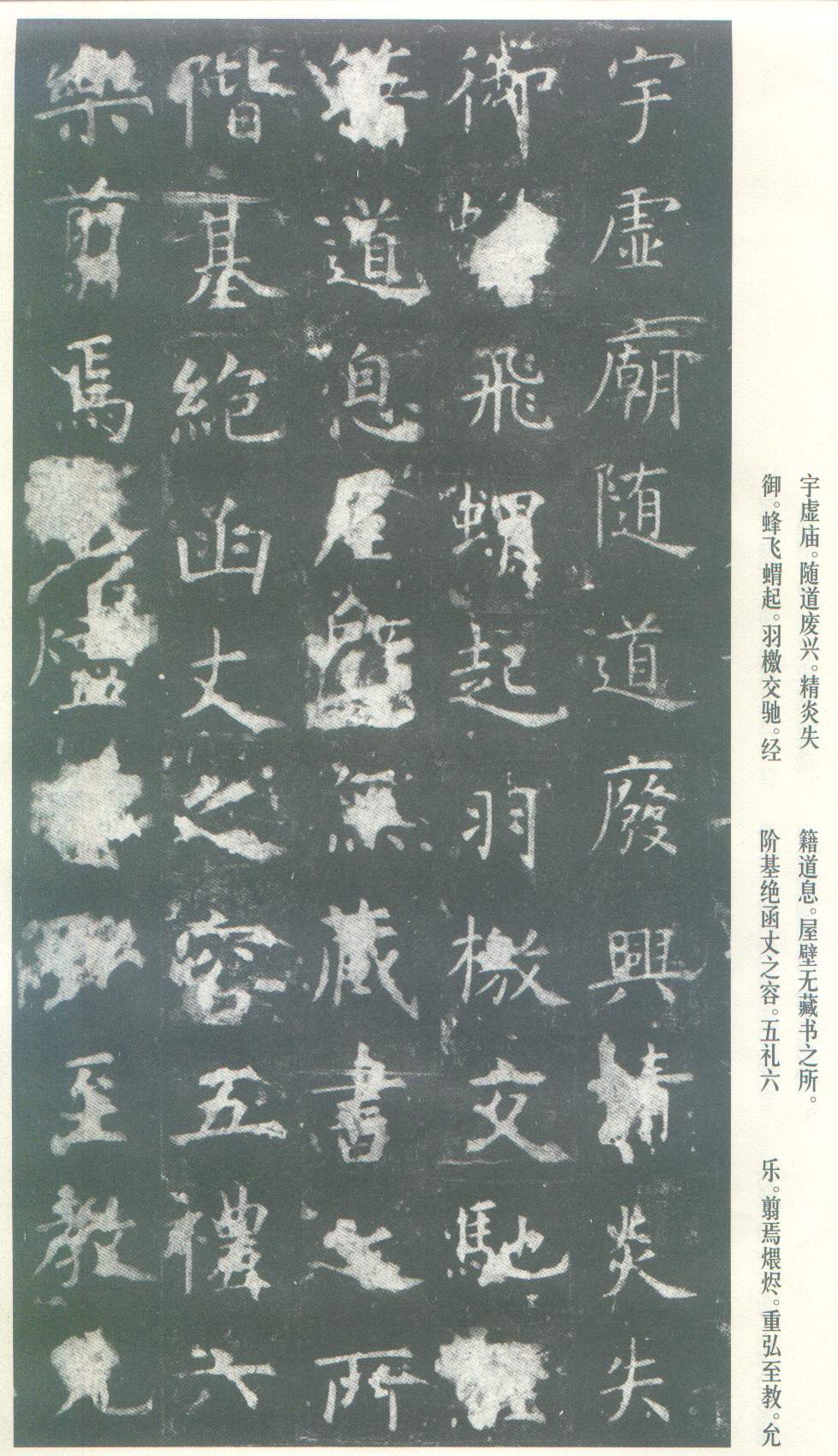
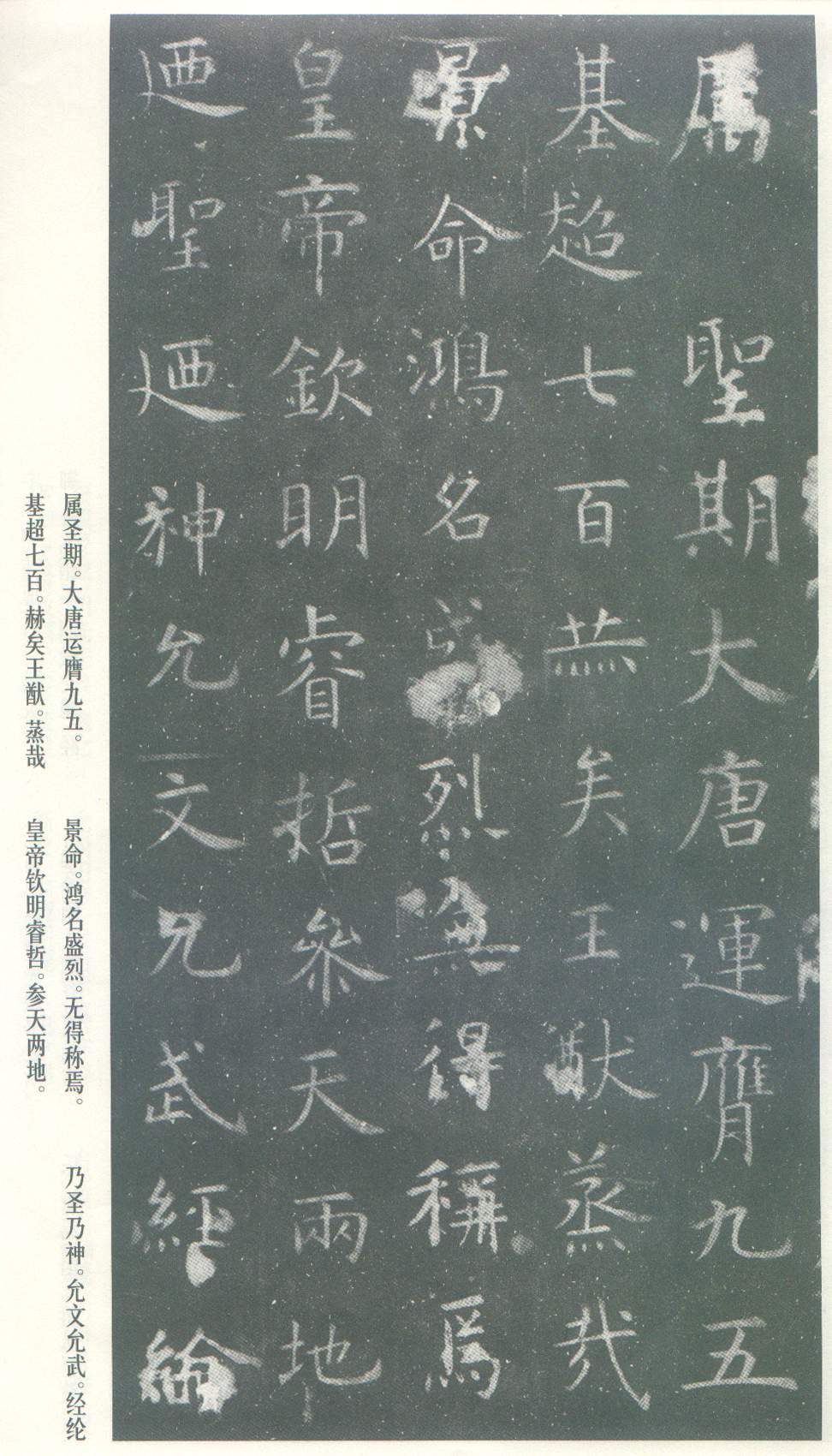
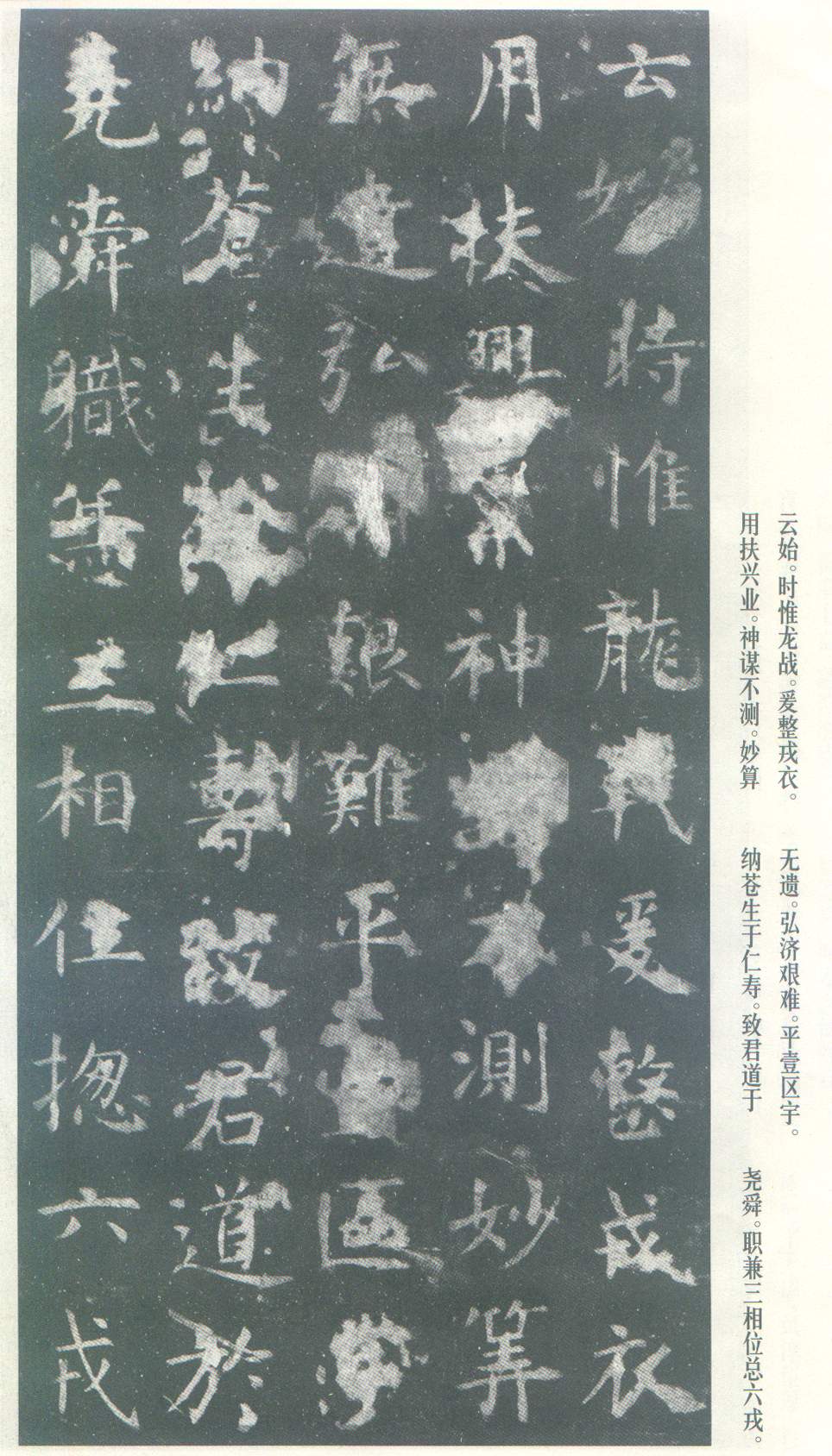
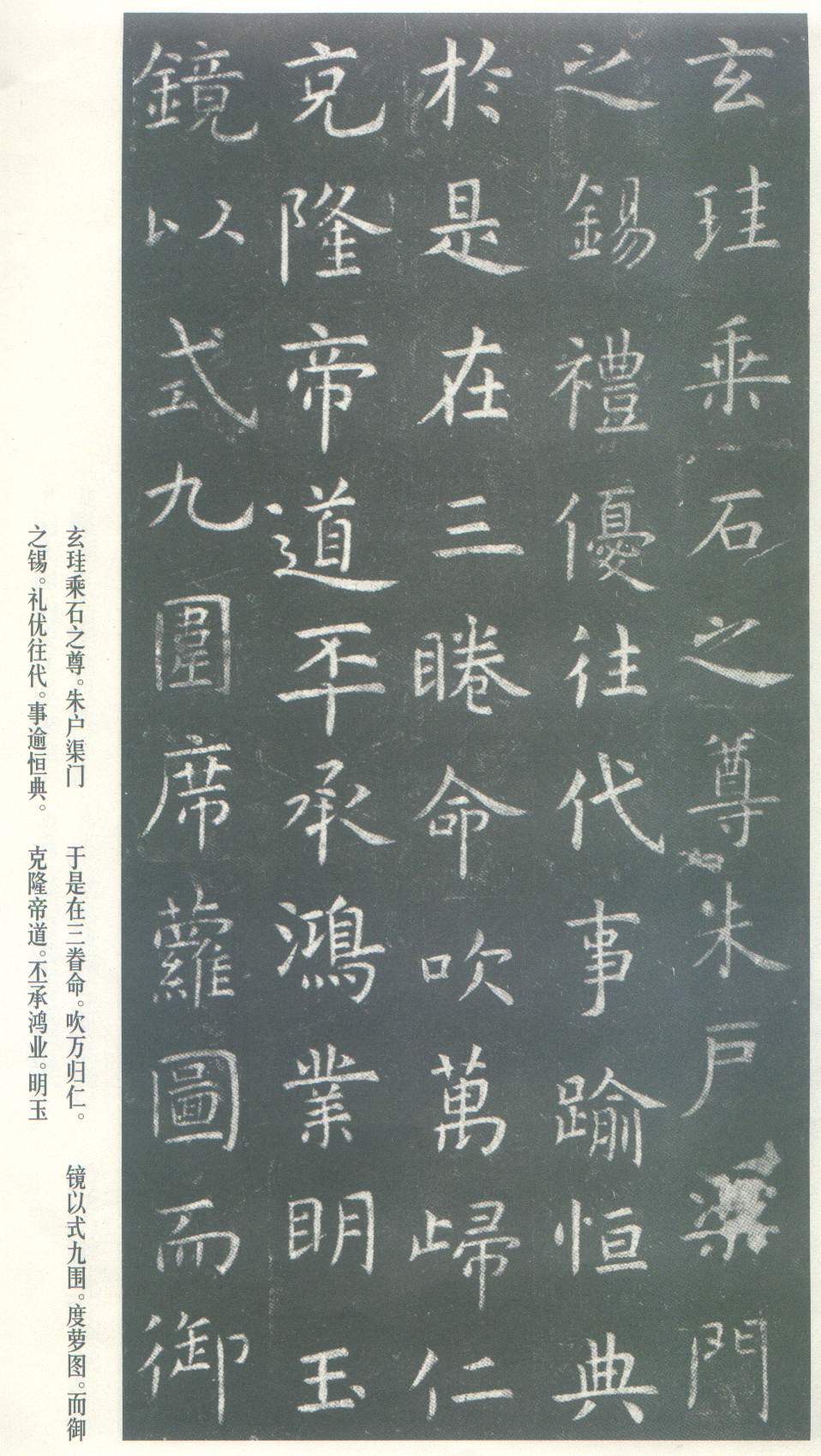
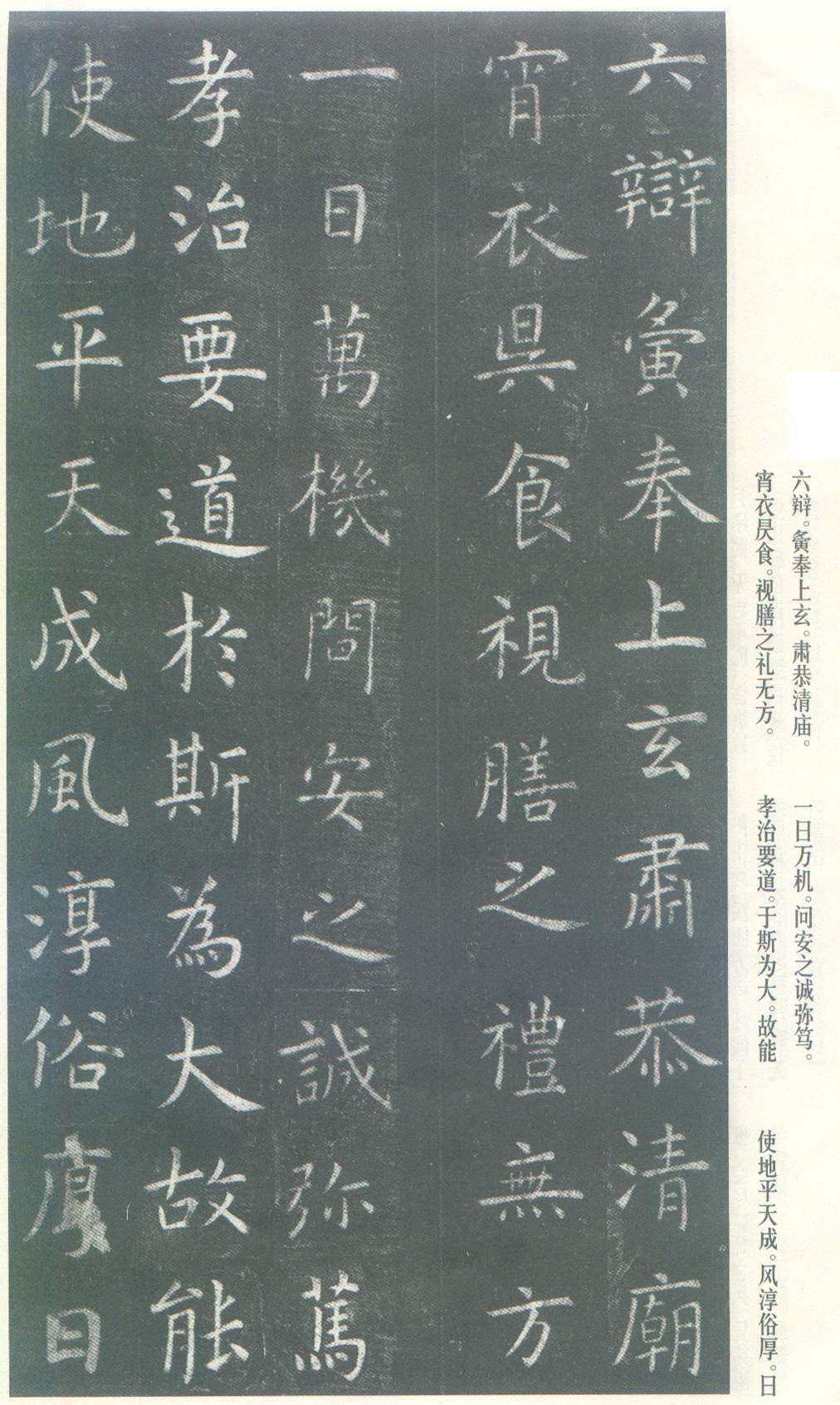
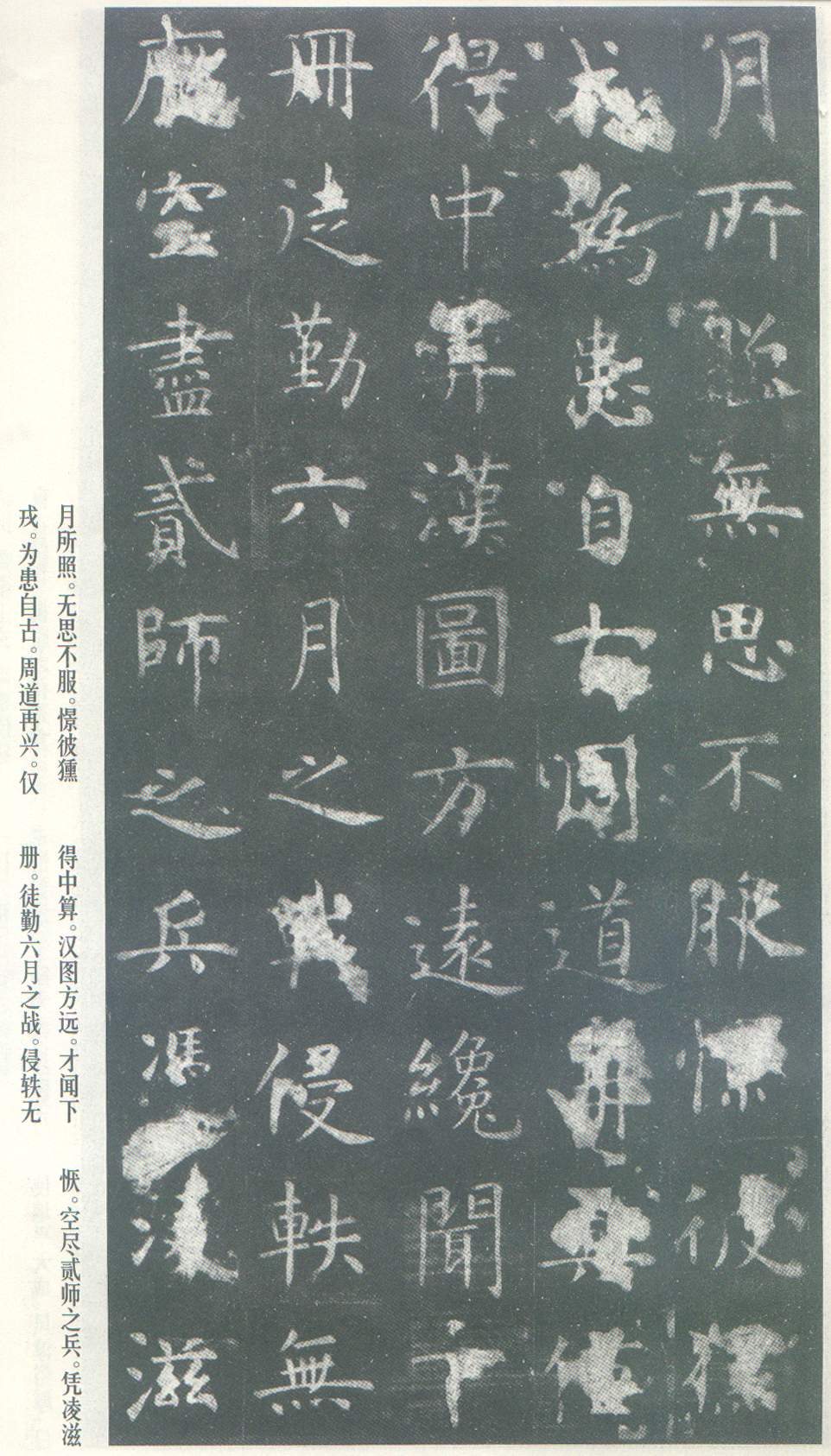
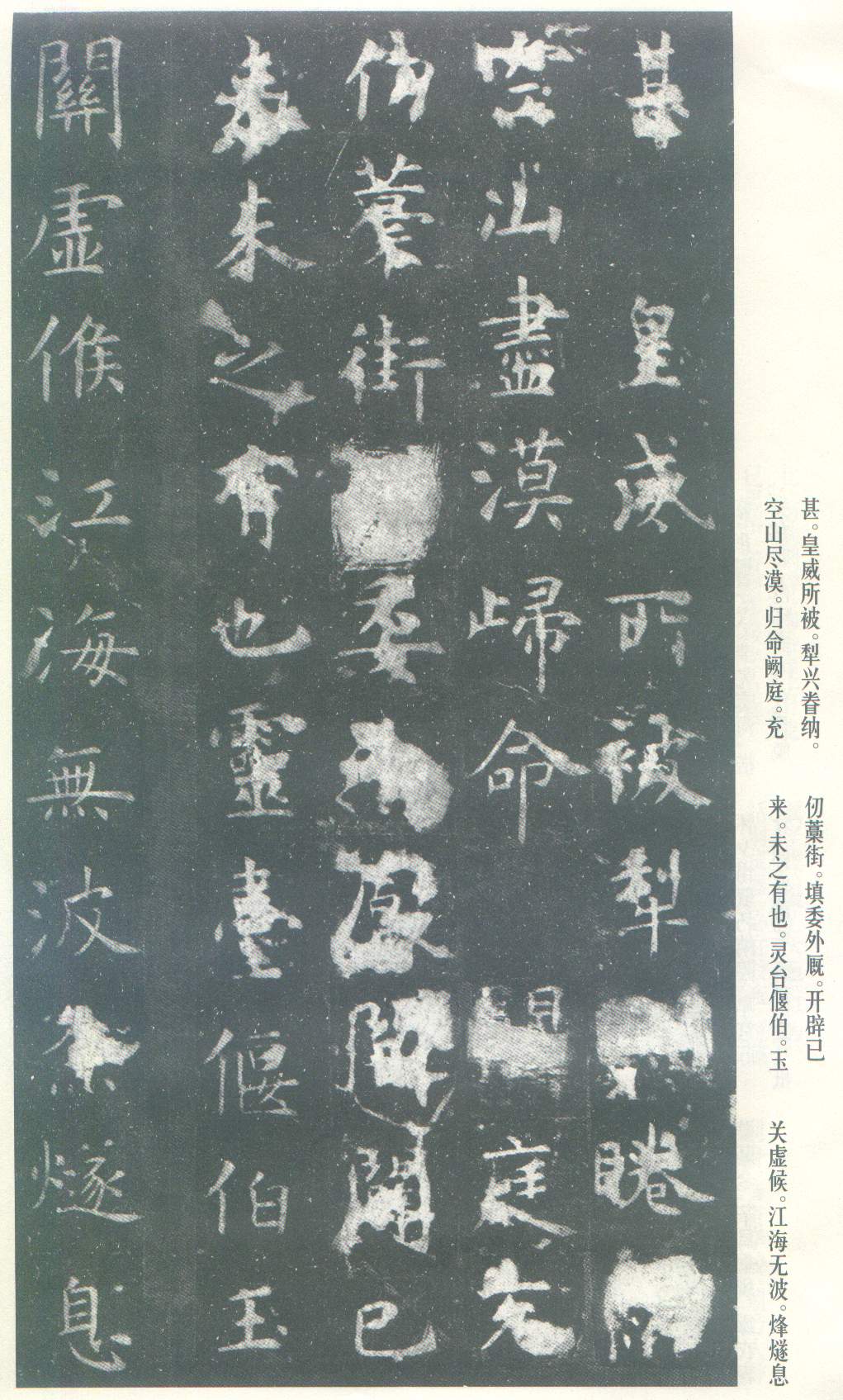
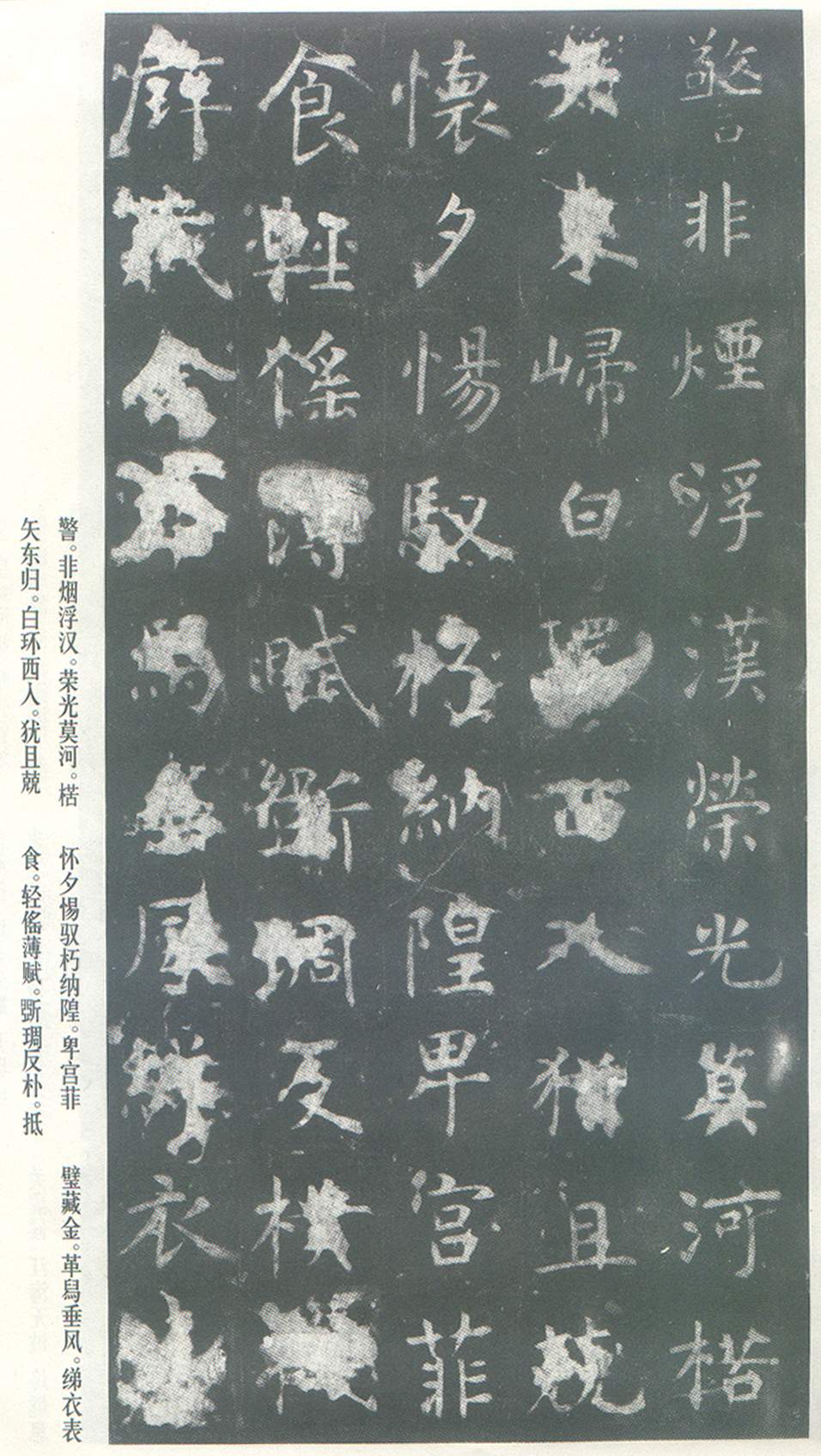
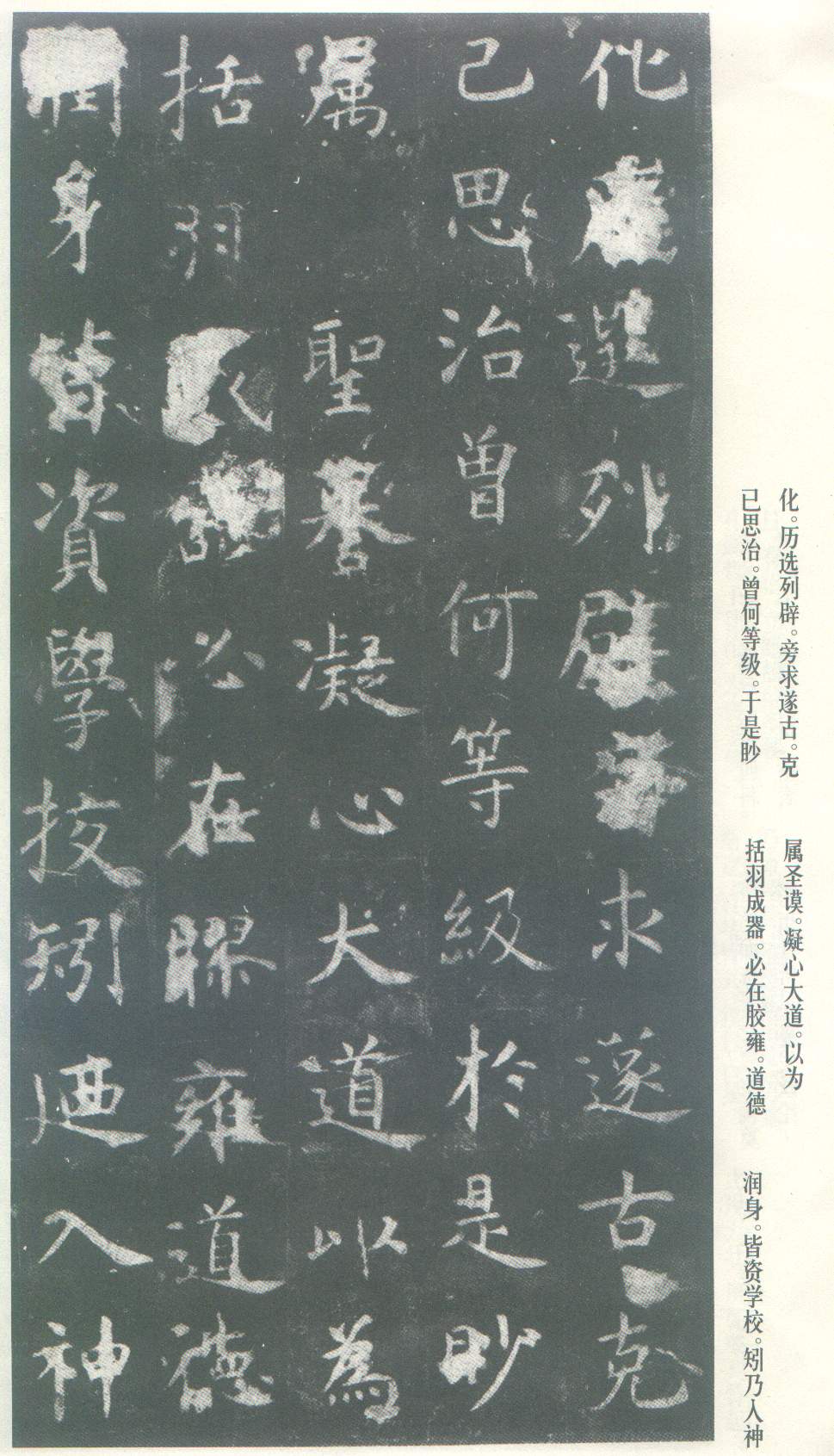
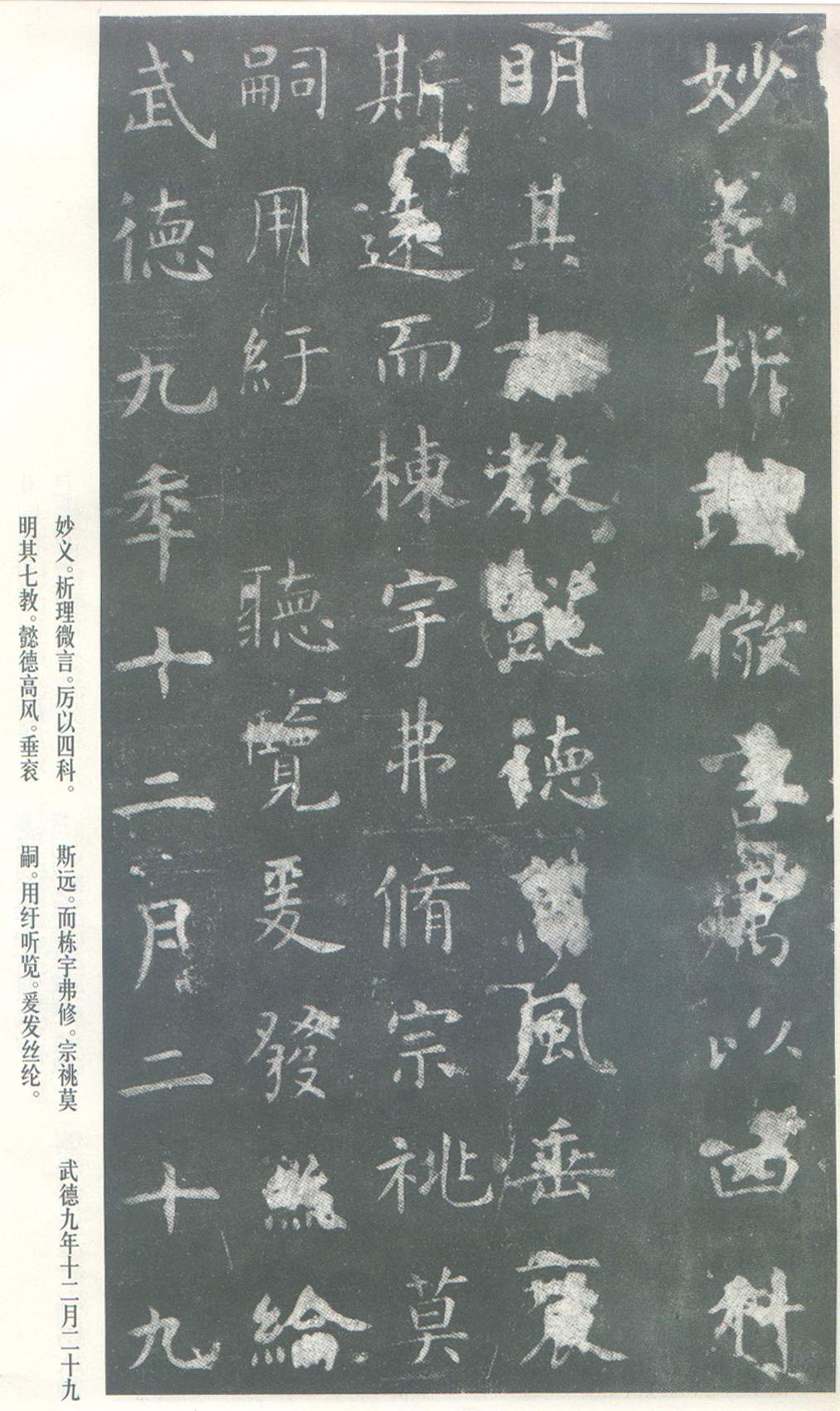
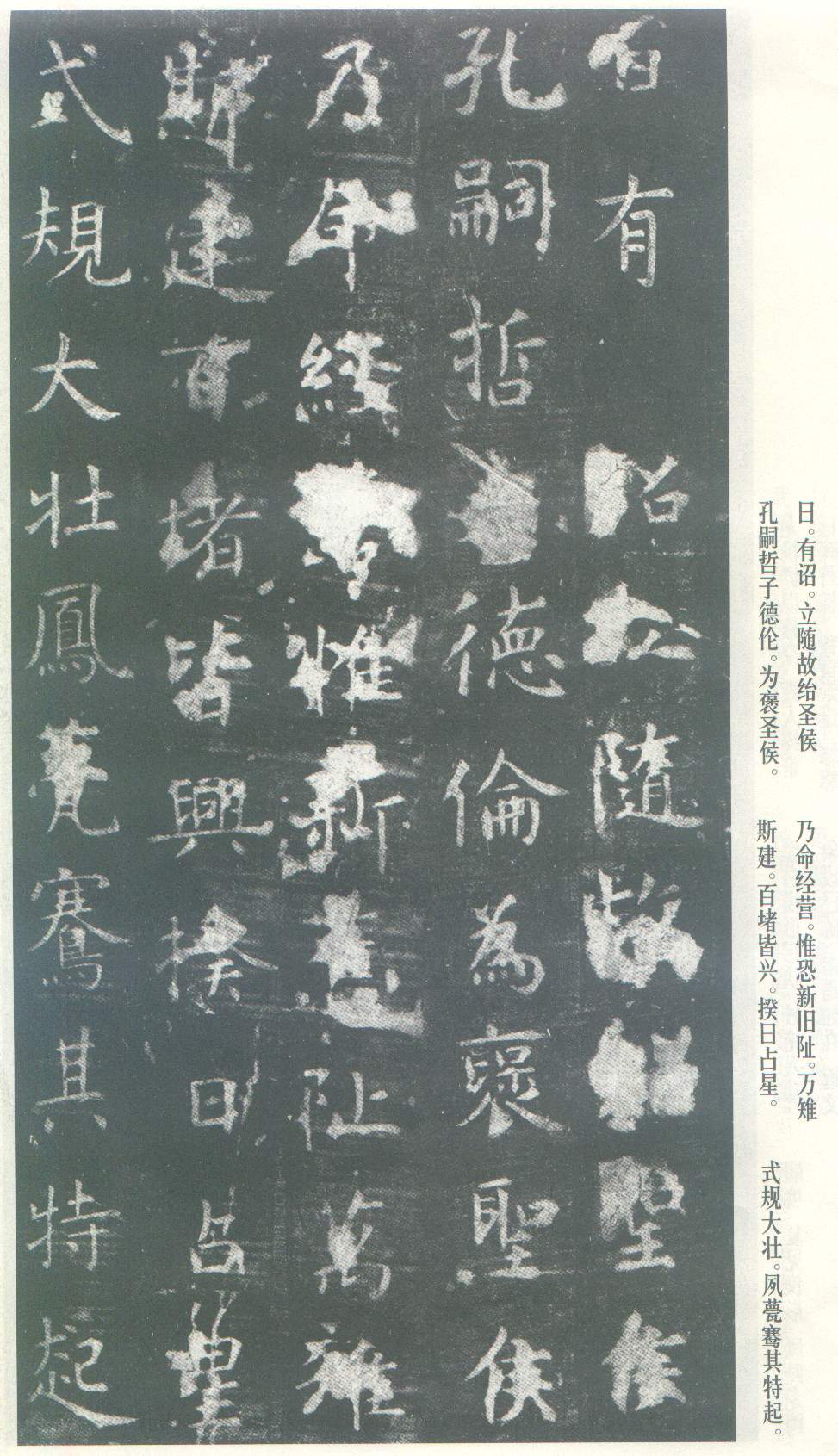
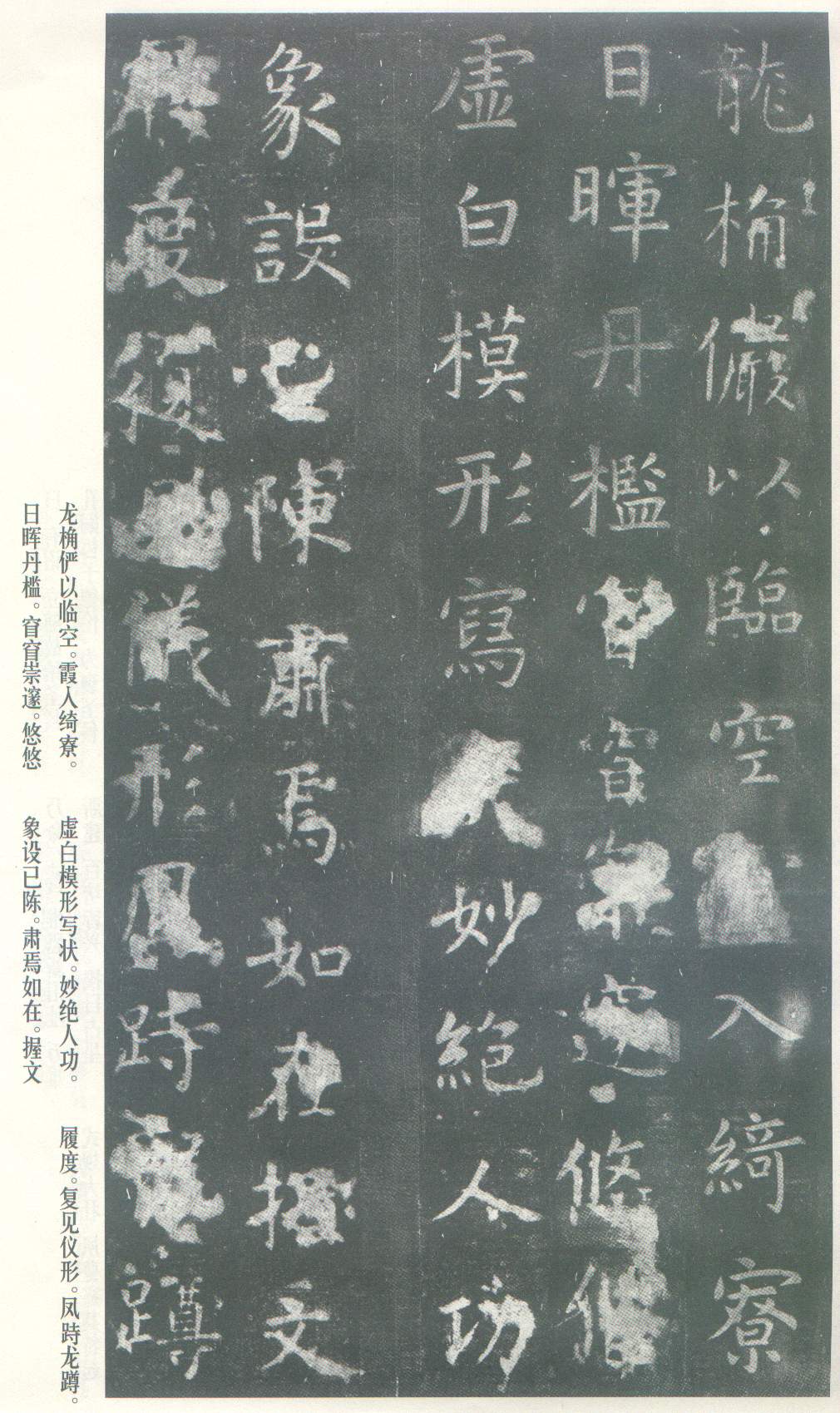
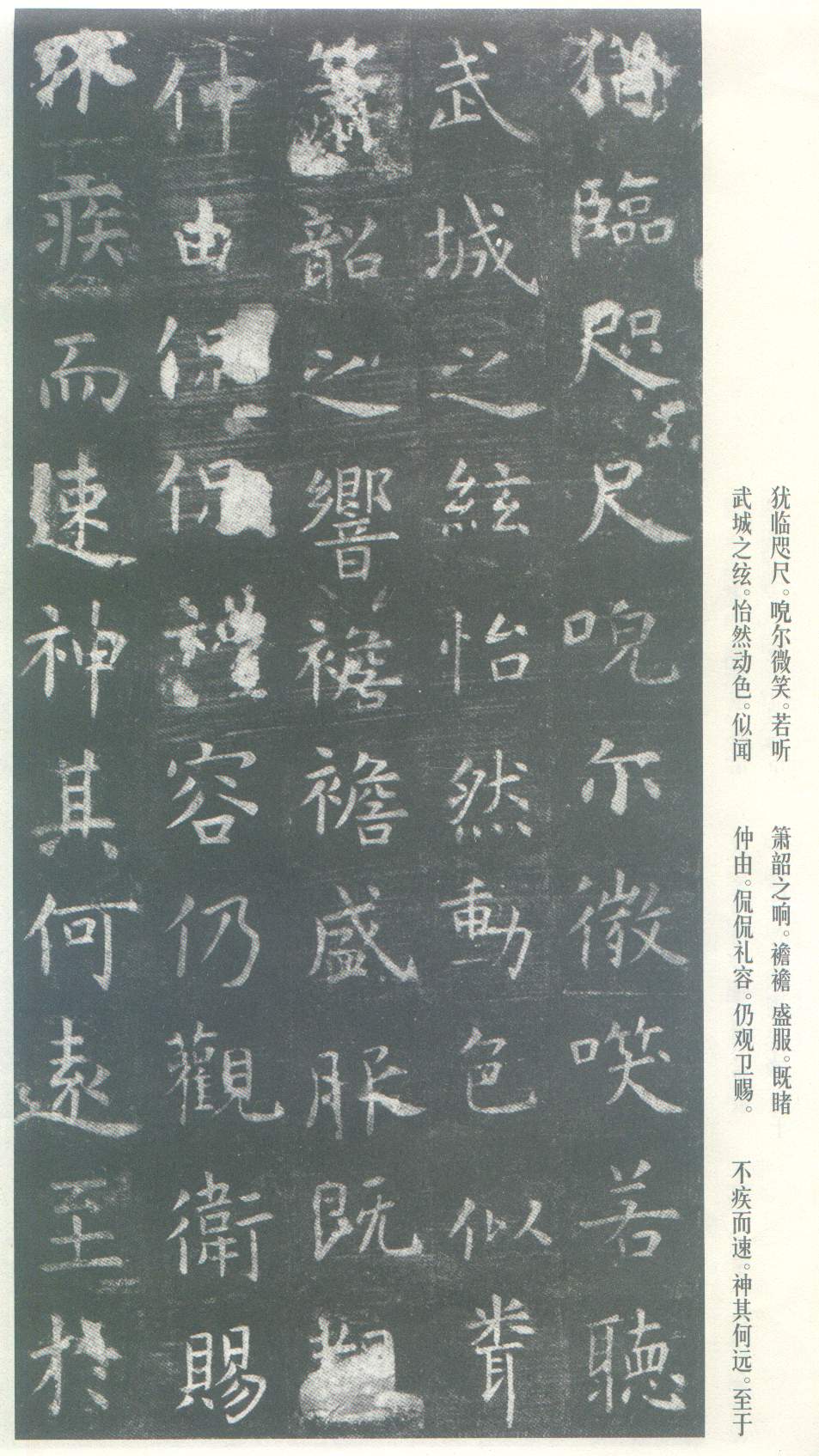
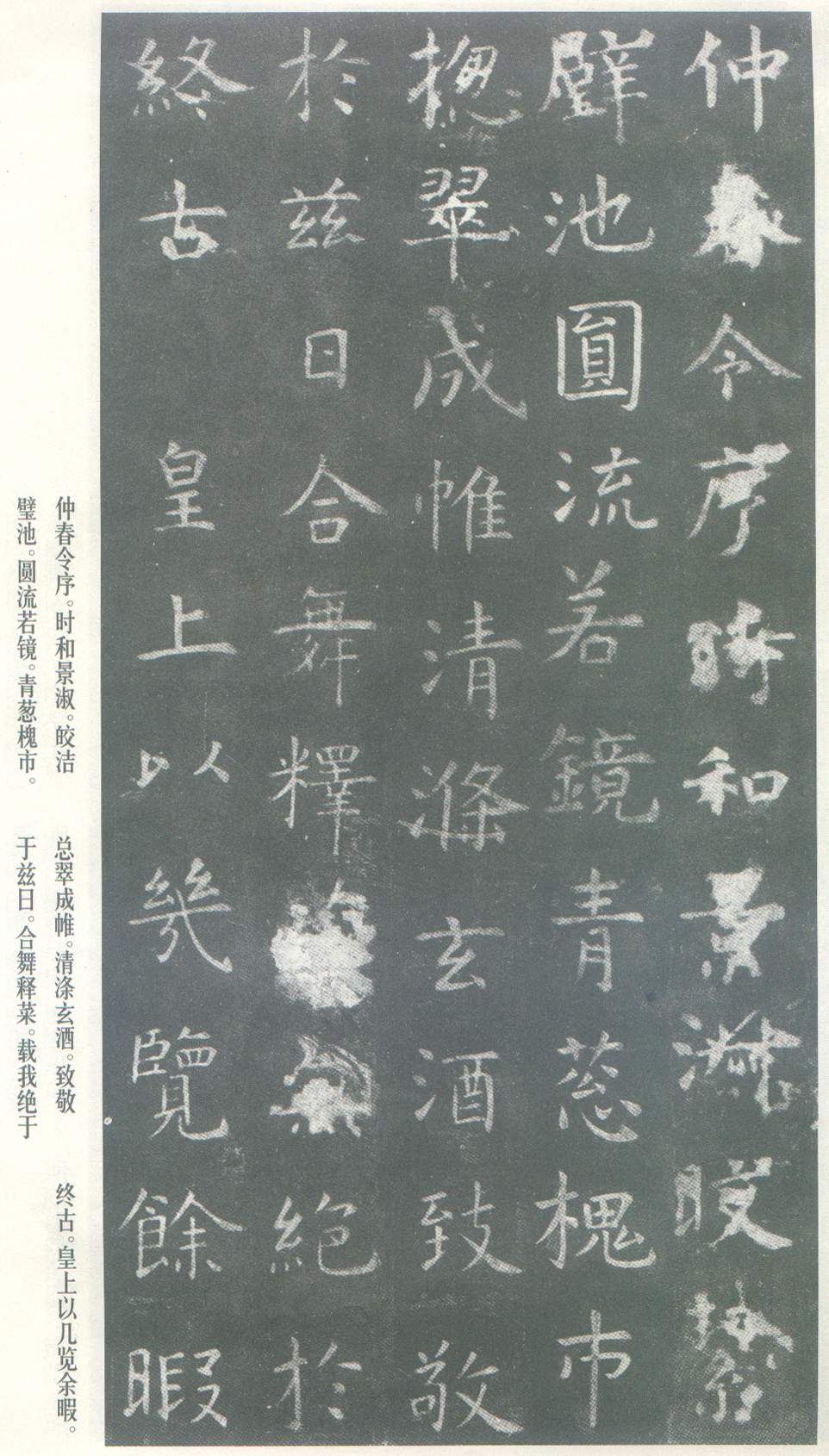
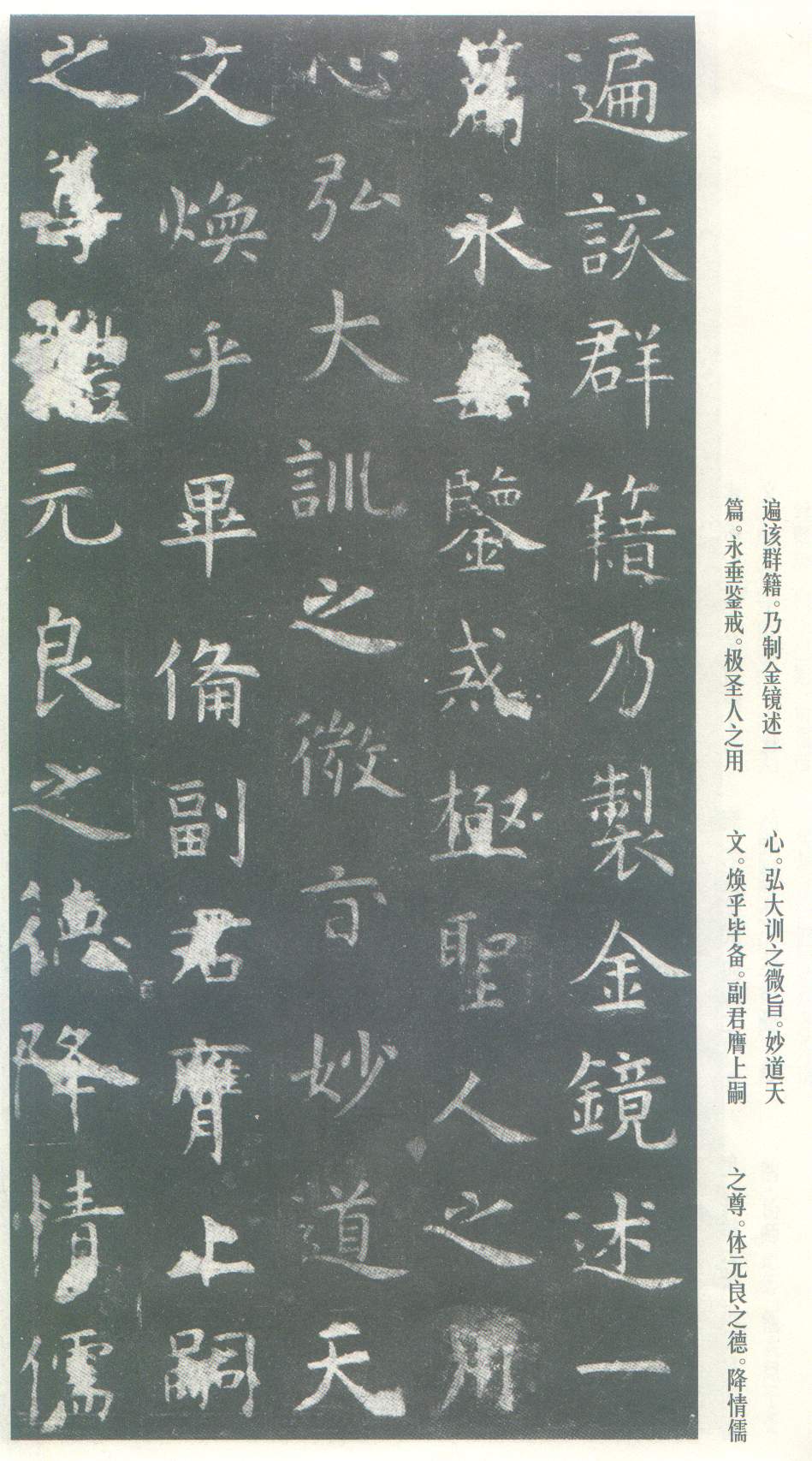
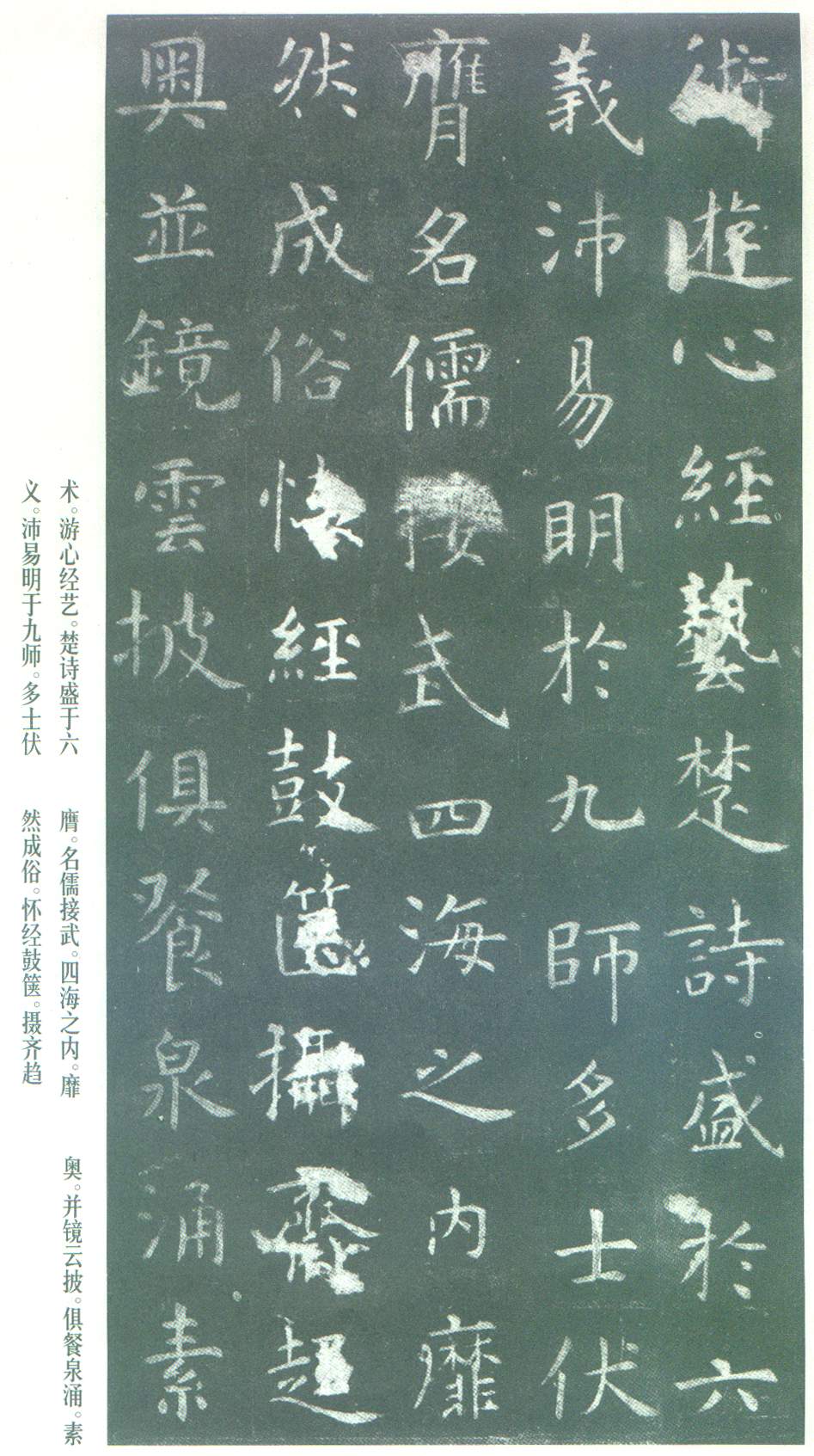
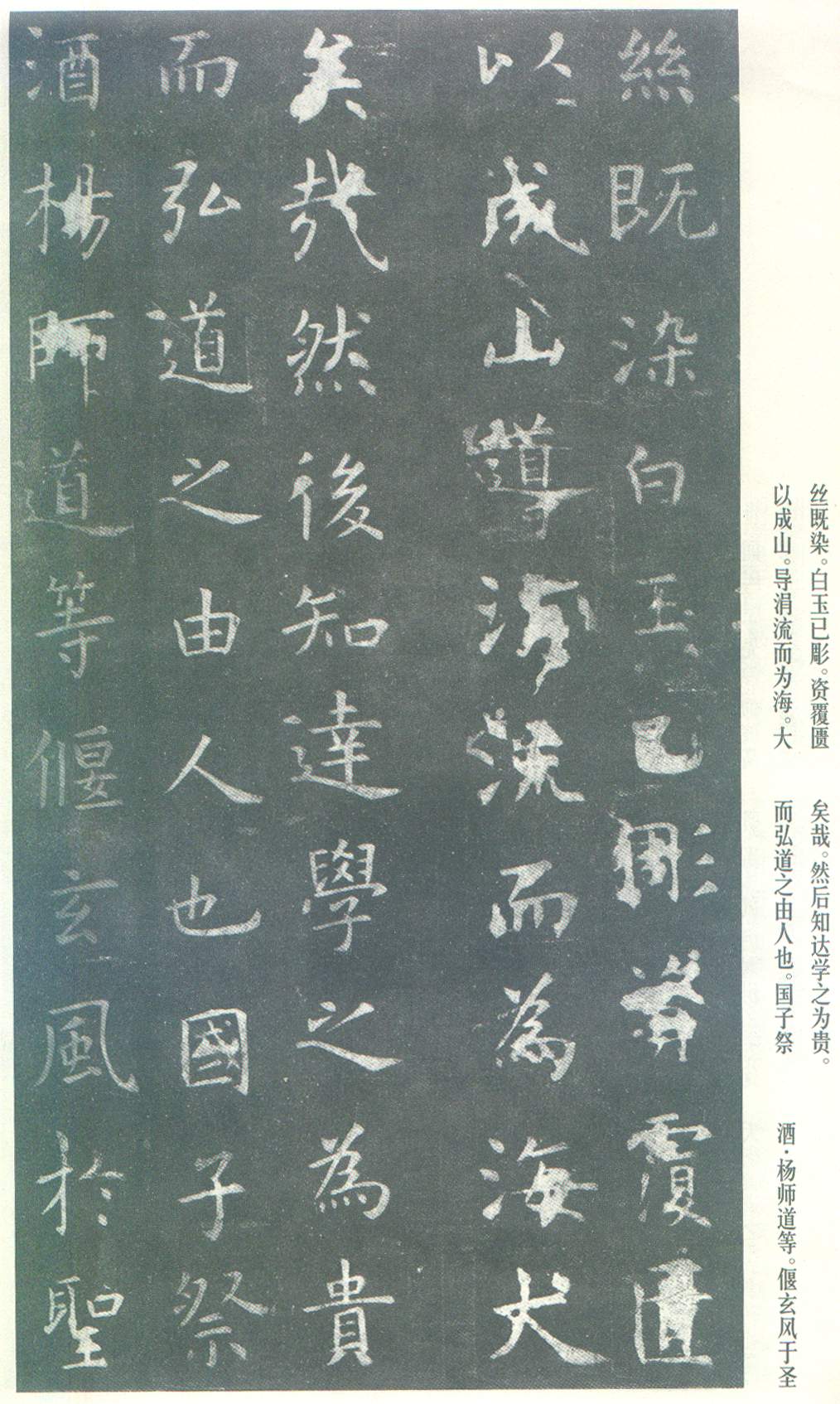
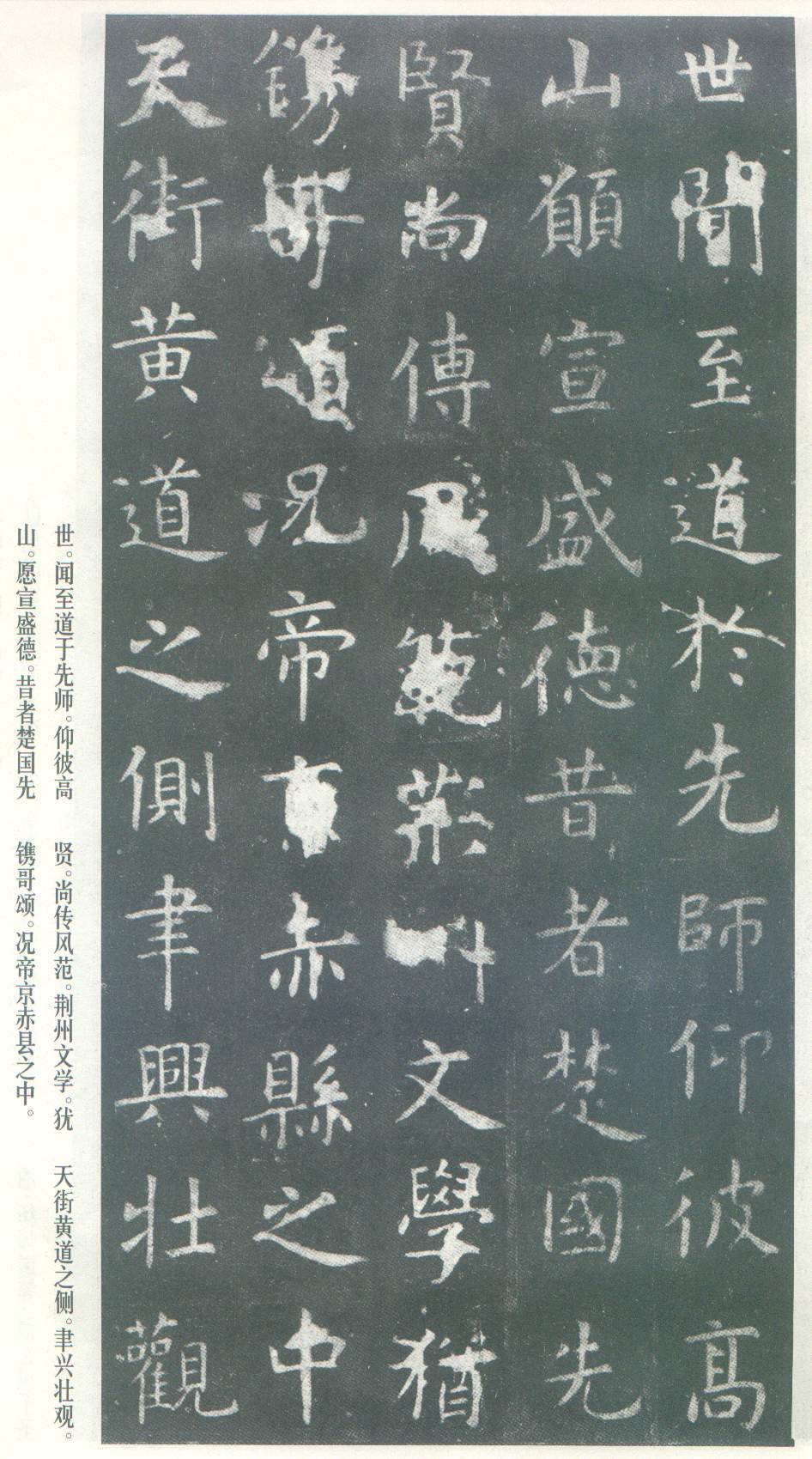
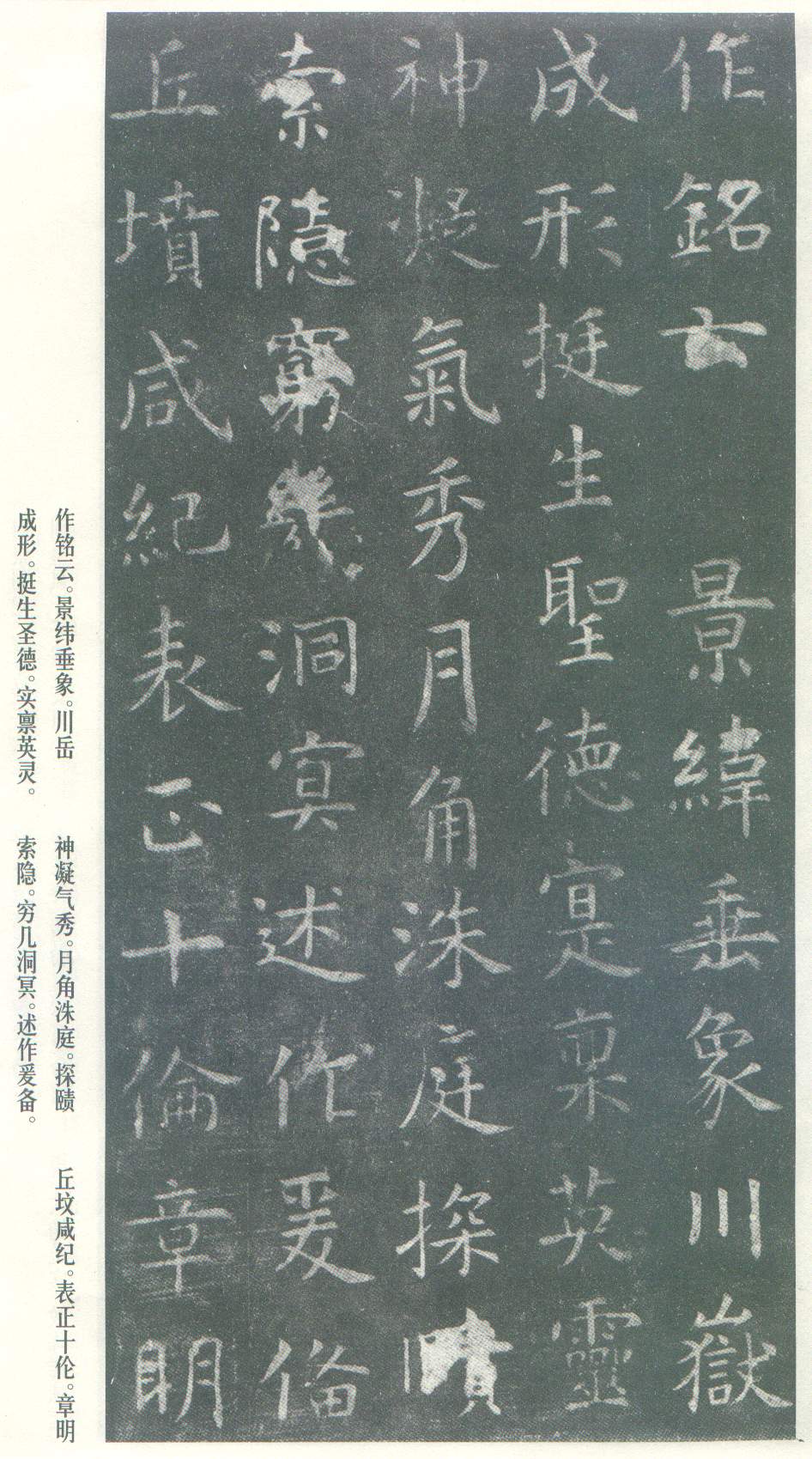
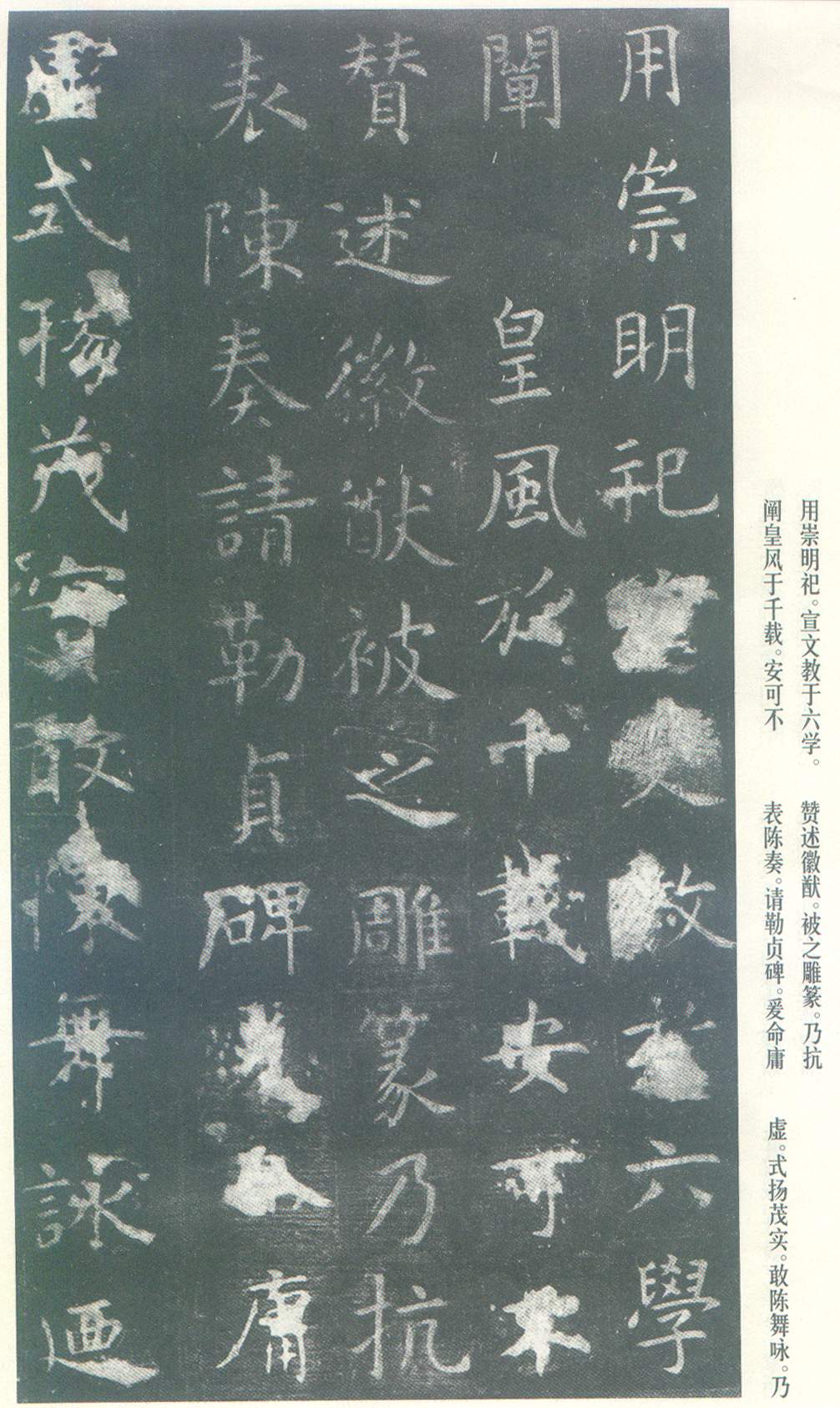
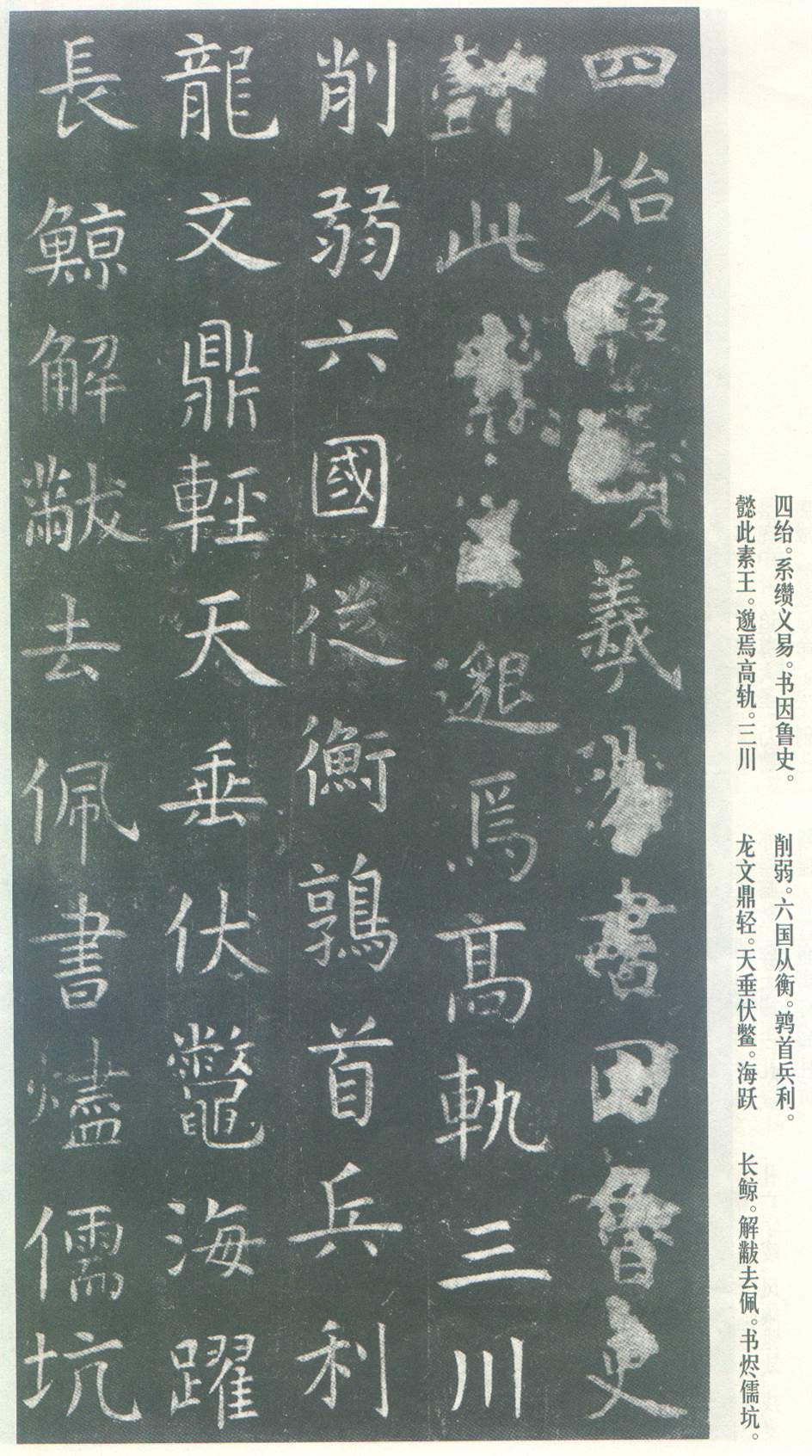
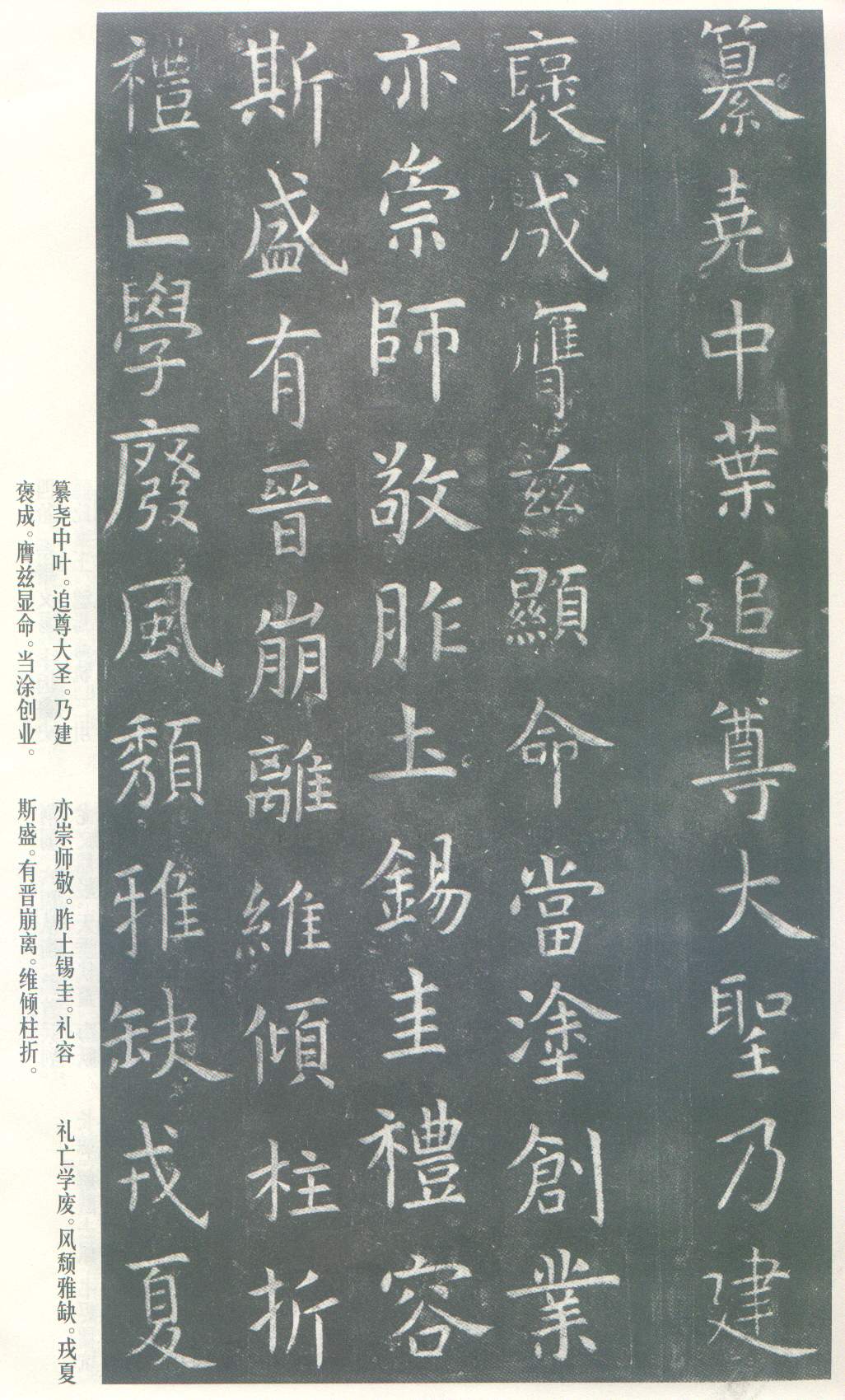
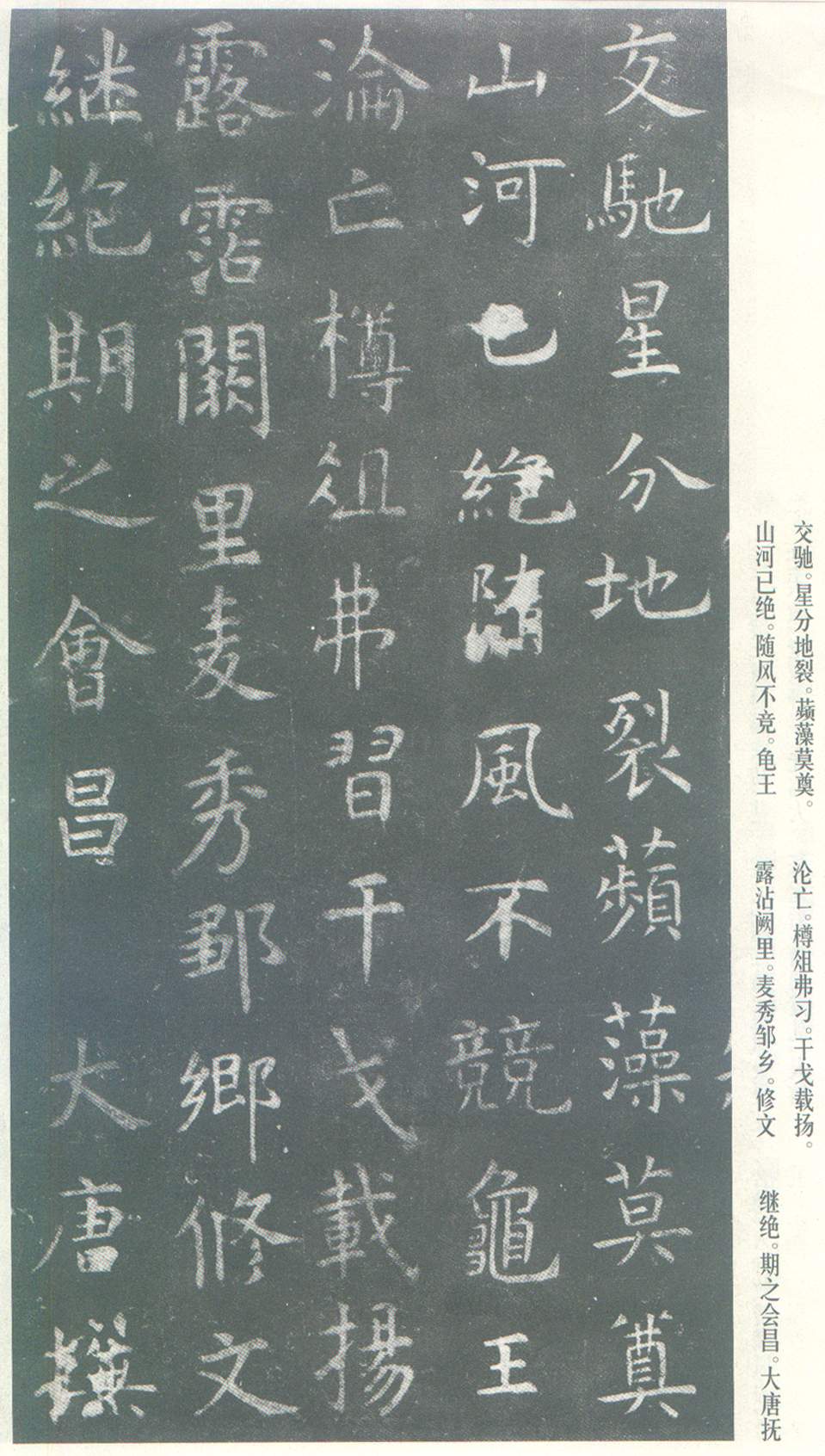
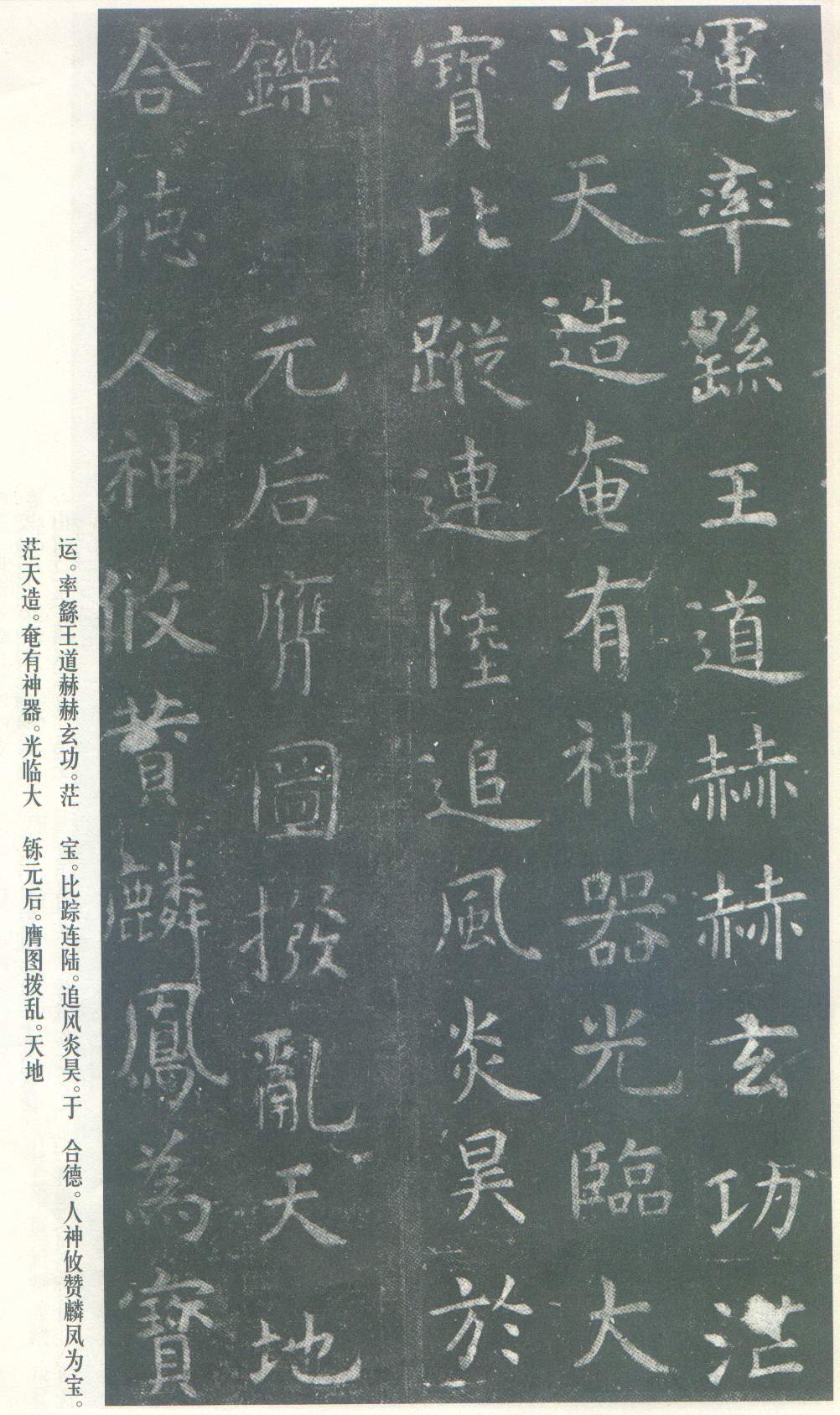
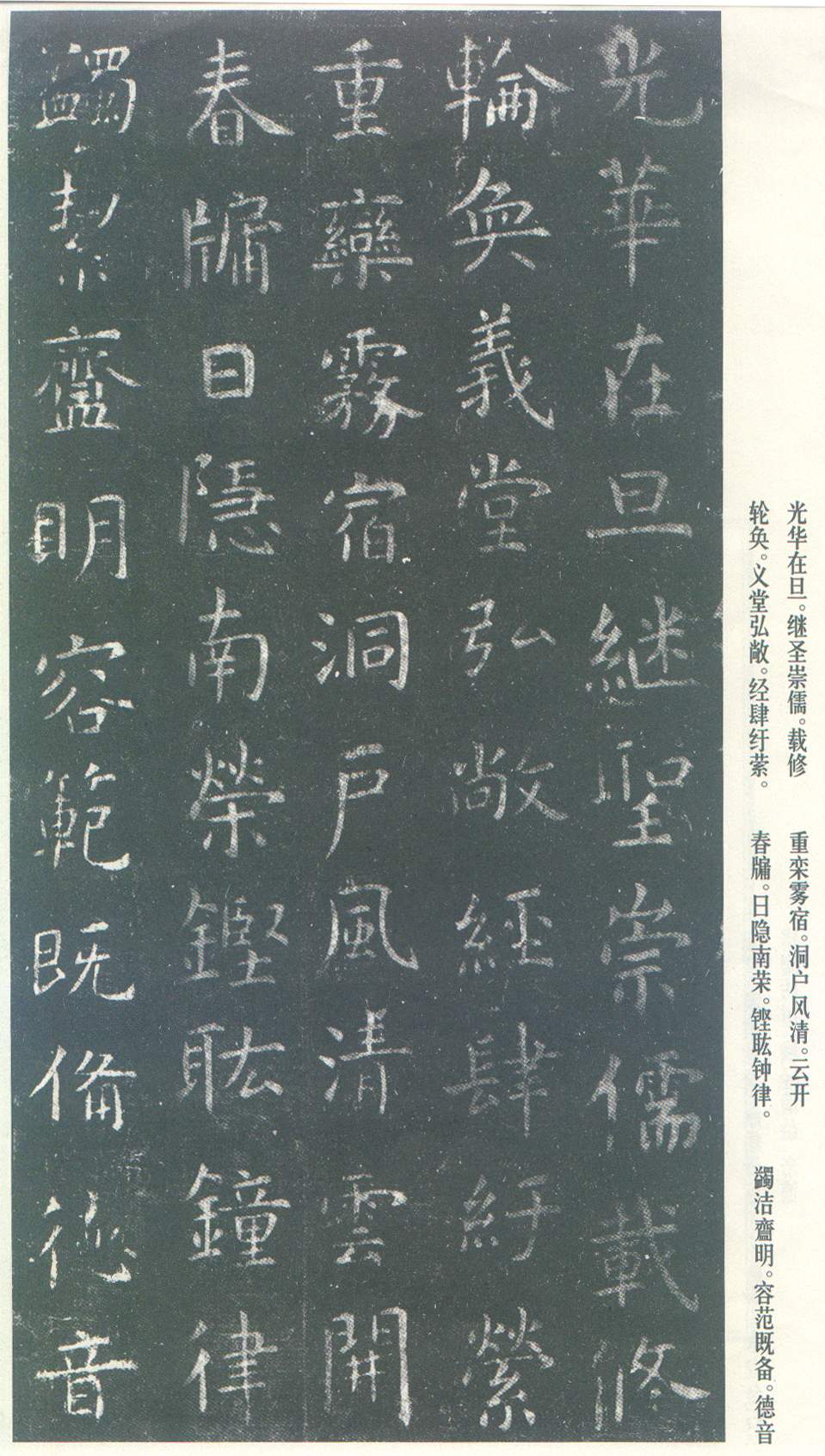
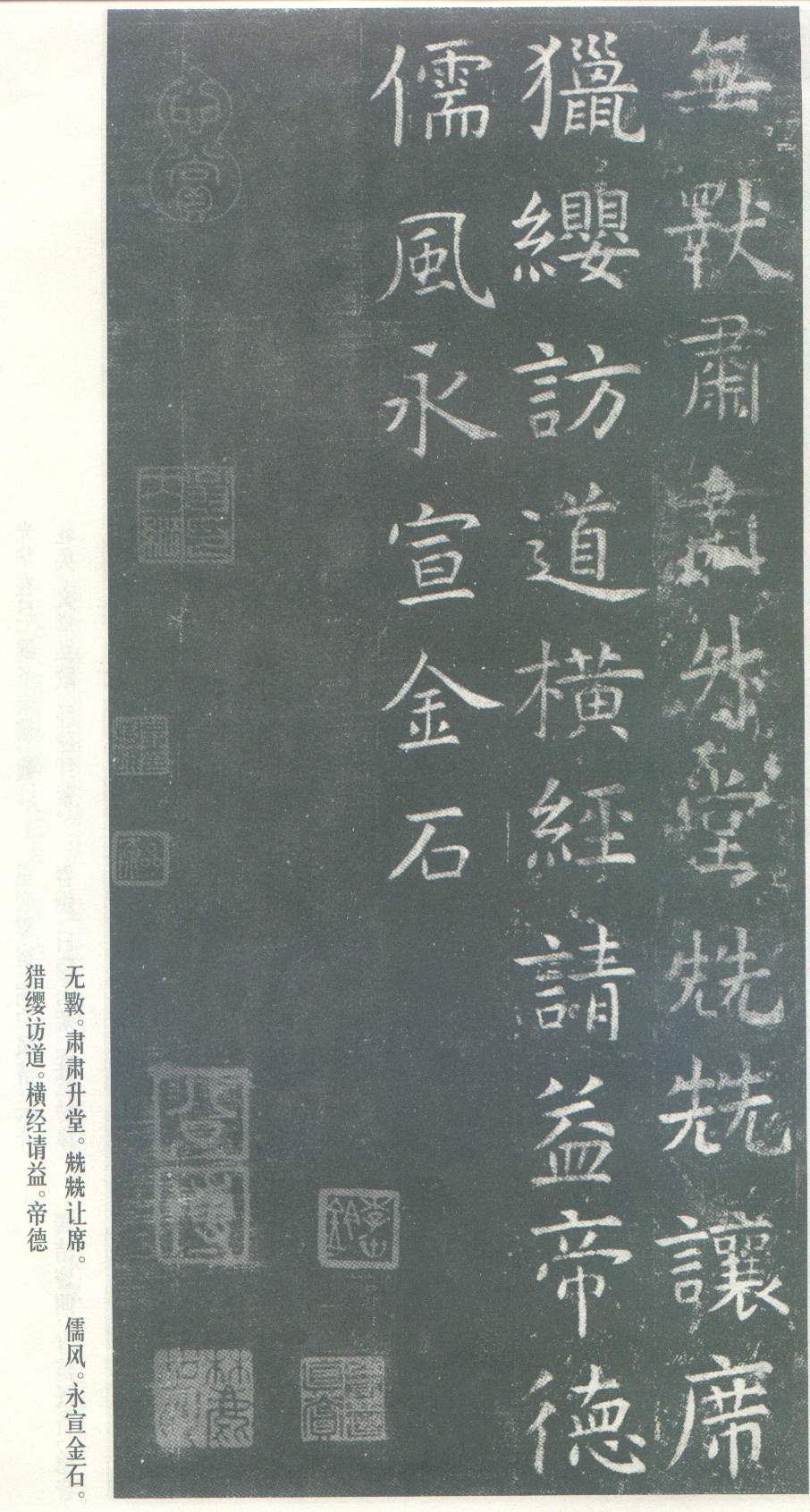
Yu Shinan's "Confucius Temple Stele" collected by Li Zonghan, collected by Mitsui Memorial Museum of Art, Japan
Regarding Mitsui's possession of the Tang rubbings "Confucius Temple Stele", we must mention Mitsui Takaken. At the beginning of this century, Mitsui Takaken (alias Zongjian, nicknamed Tingbing) was a member of the Mitsui Foundation in Japan. He was good at art and was fond of connoisseurship. With abundant financial resources, he sent his friend and famous seal engraver Hejing Tsuenlu (Xianlang) to China to search for Chinese epigraphy and stone inscriptions, and obtained more than 100 kinds of precious and rare ancient Chinese inscriptions, including ten unique copies of Tang characters. In the Song Dynasty, there were more than half a hundred Tutu paintings, all of which were secretly hidden in his Tingbing Pavilion, and their reputation spread far and wide. However, because it is hidden deep and has been isolated from the world for more than 60 years, most people only hear about its reputation but rarely know its details, let alone enjoy it. Until recent years, it was moved to Mitsui Bunko in Tokyo Nakano Ue Takada, which is a corporate corporation. Through the regular public display of the library, people can get a glimpse of it, including the long-hidden Tang rubbings "Confucius Temple Stele" by Yu Shinan.
The rubbings of Yu Shinan's "Confucius Temple Stele" during the Qianlong and Jiaqing years are as follows:
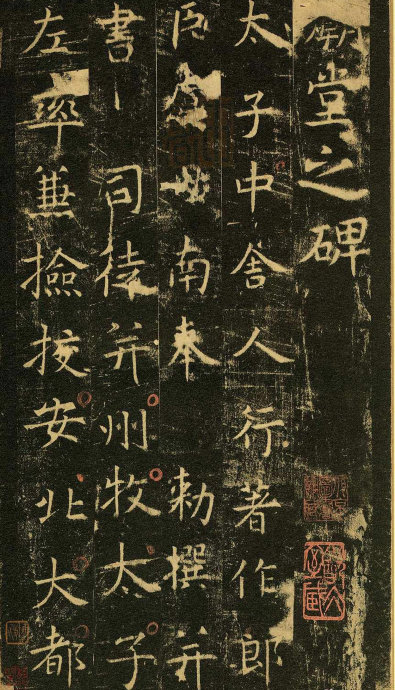
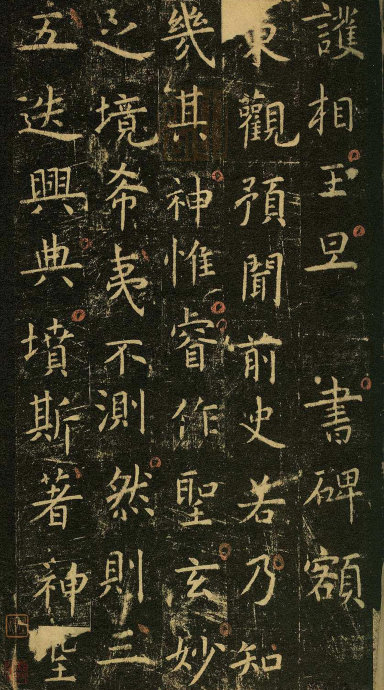
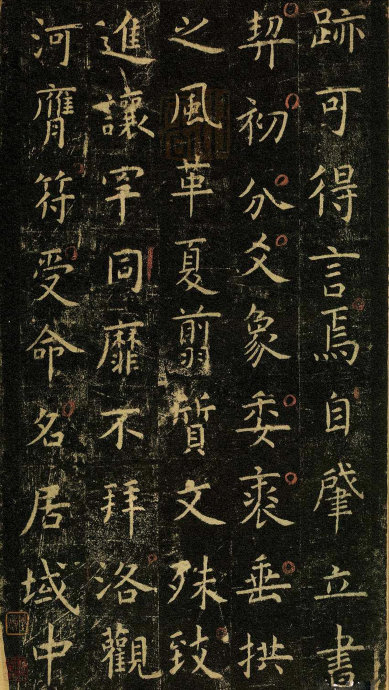
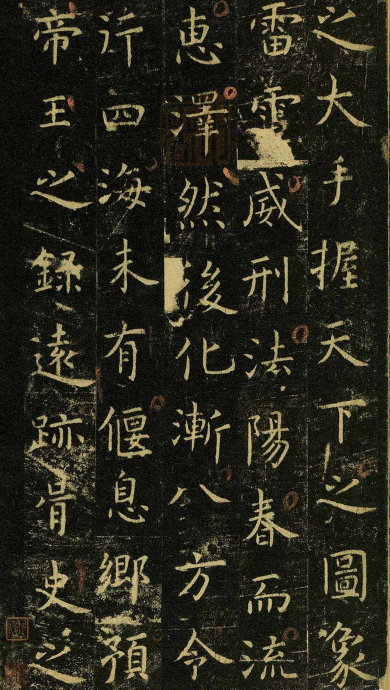
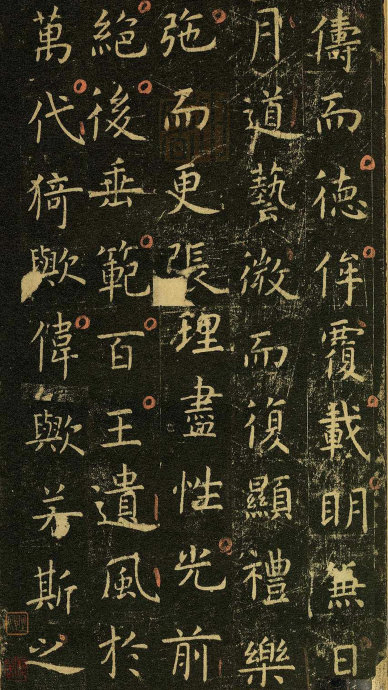
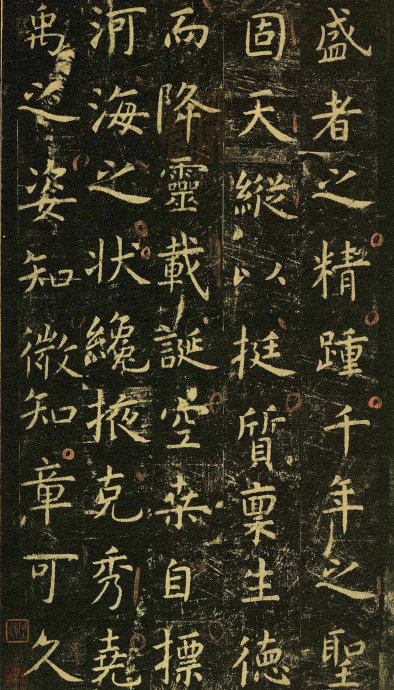
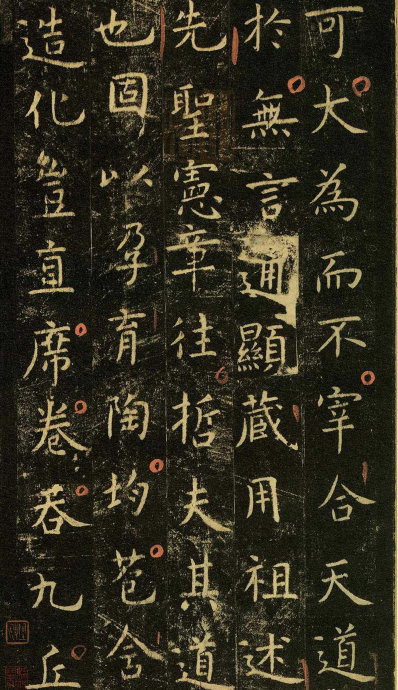
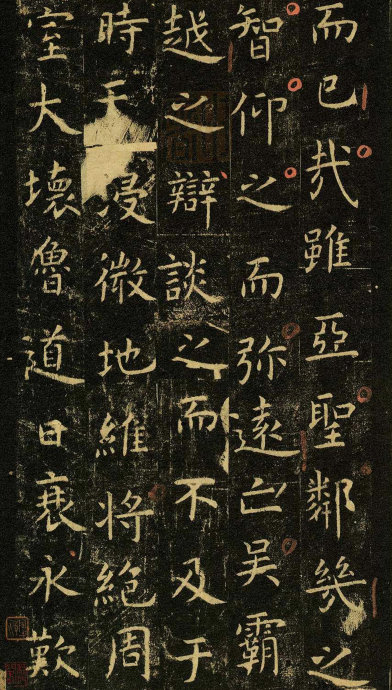
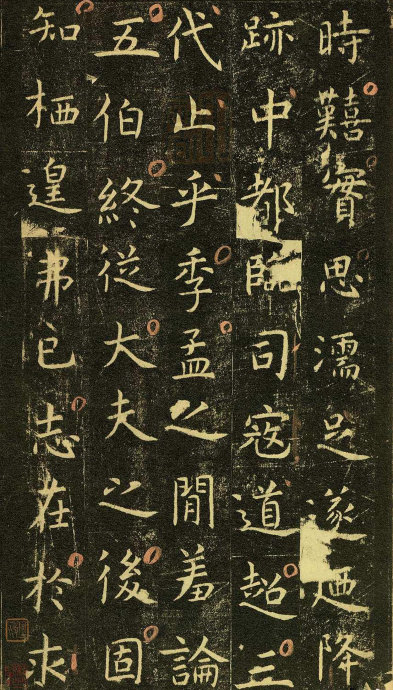
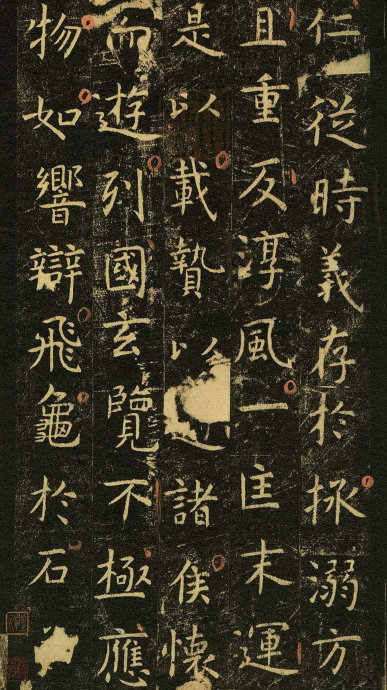
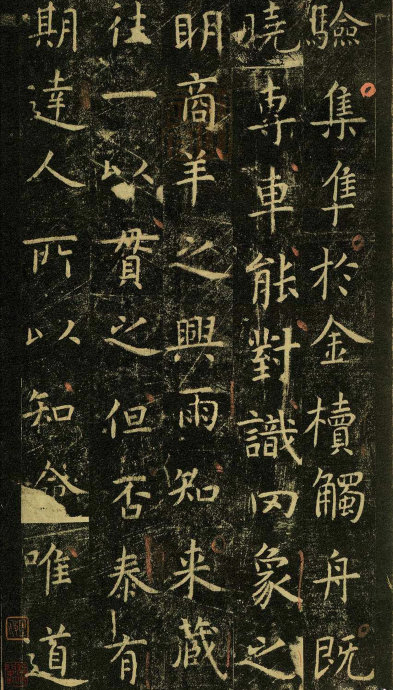
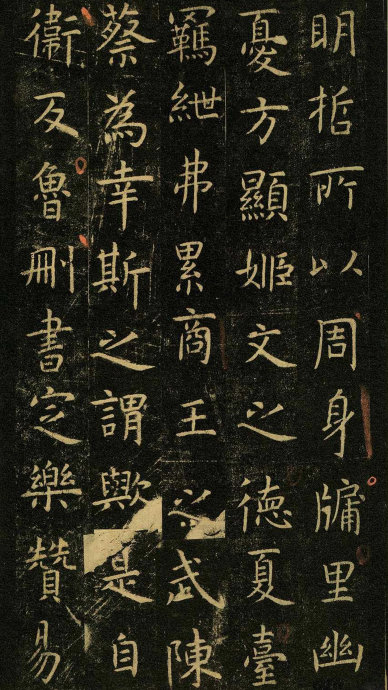
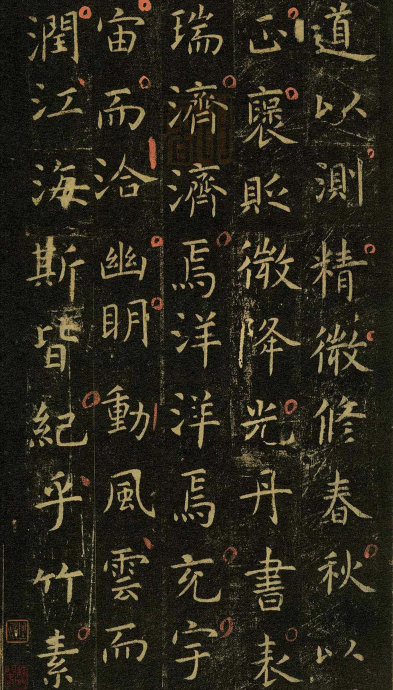
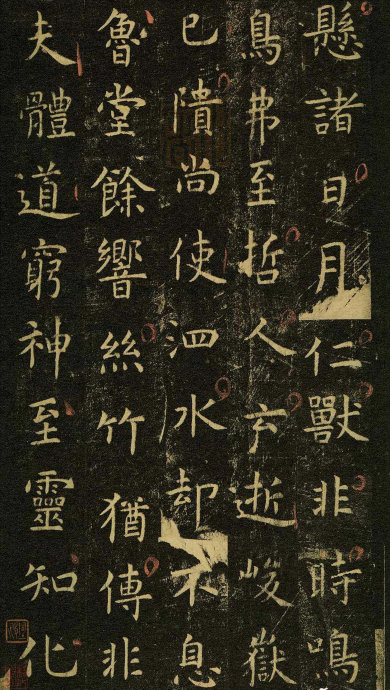
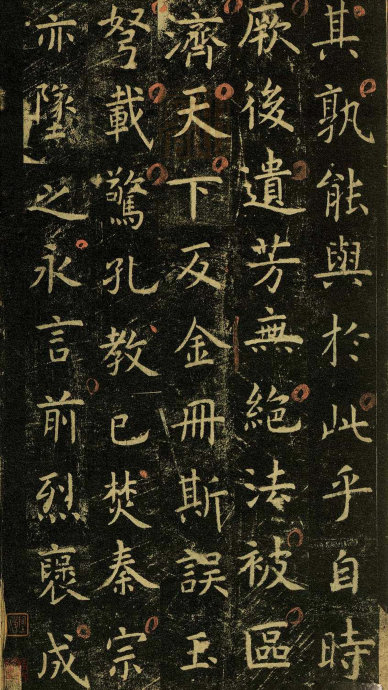
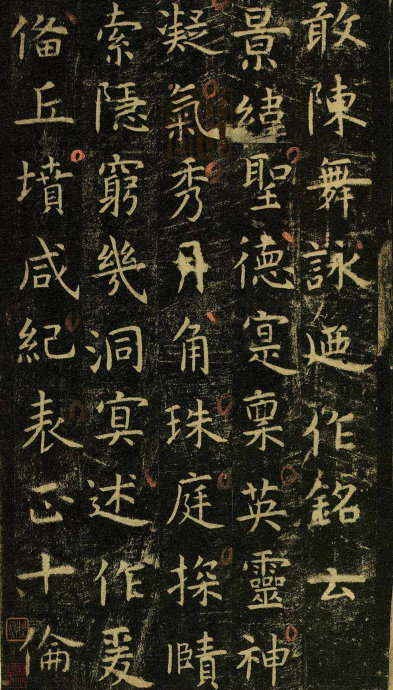
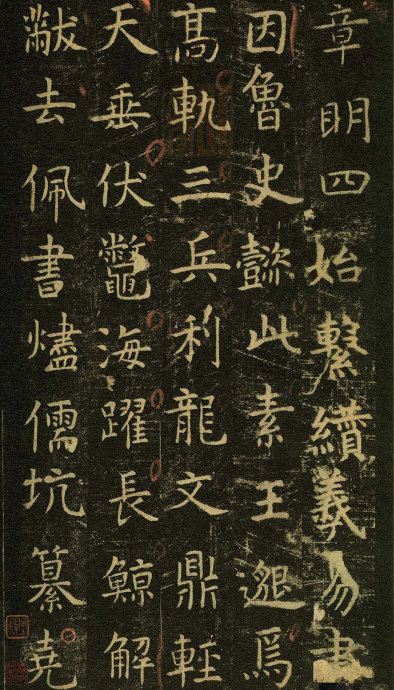
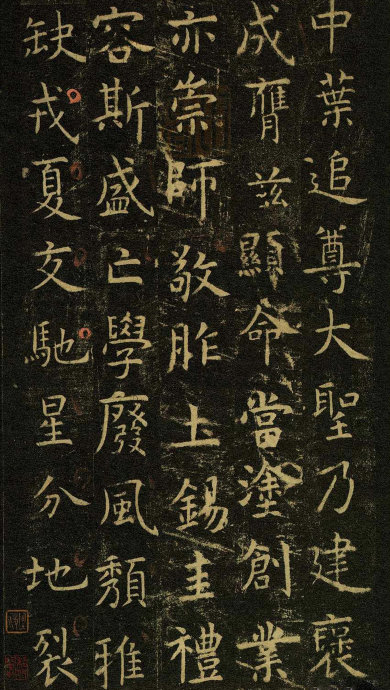
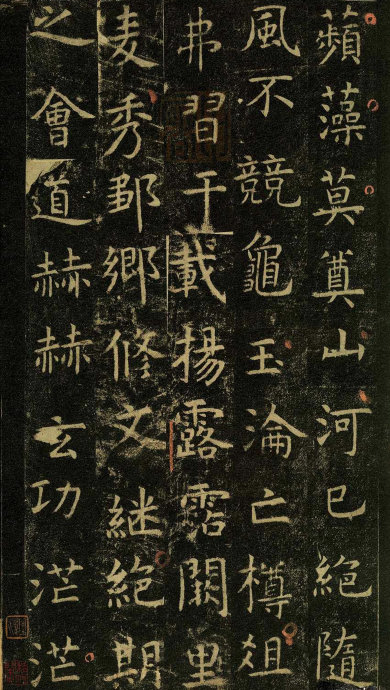
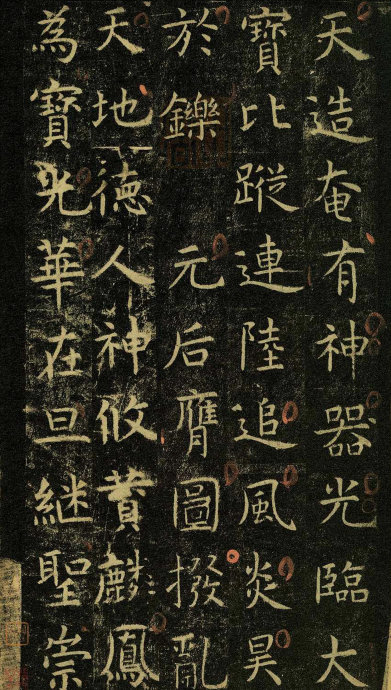
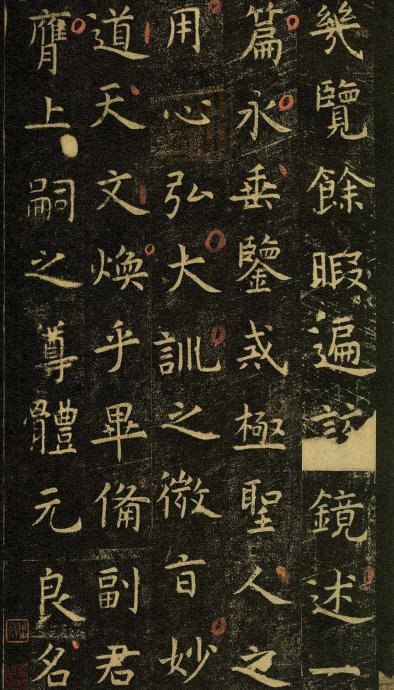
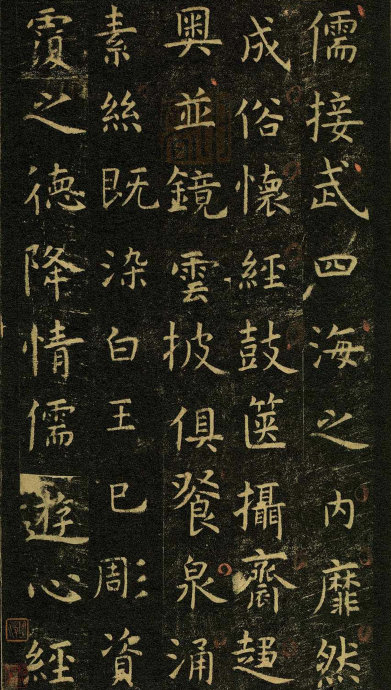
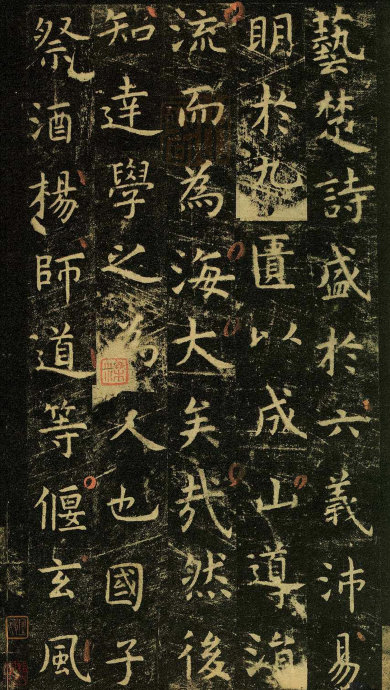
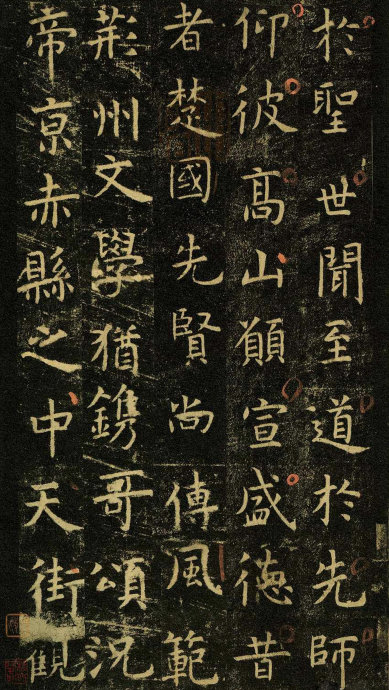
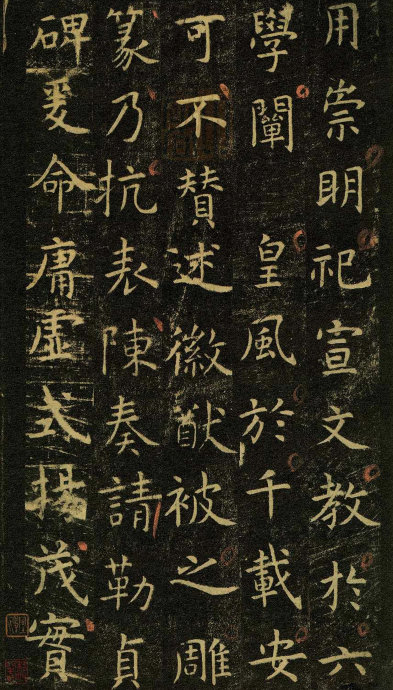
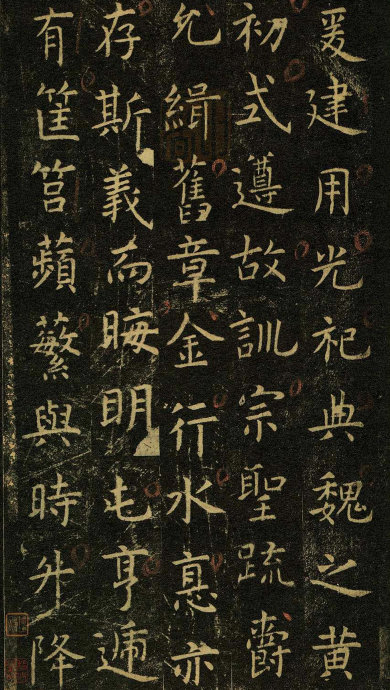
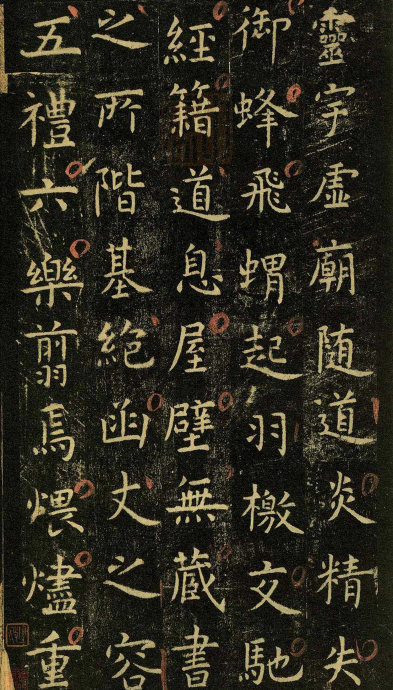
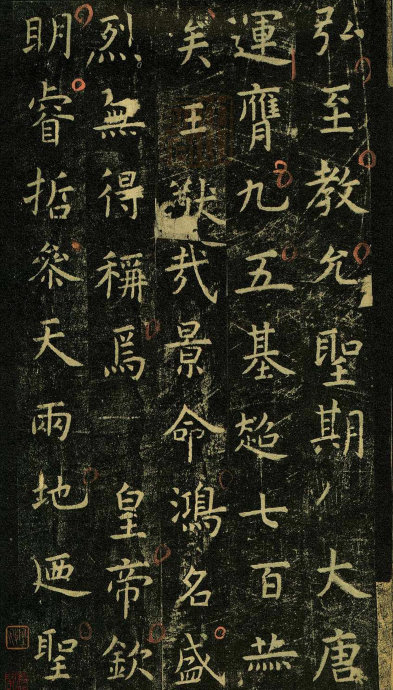
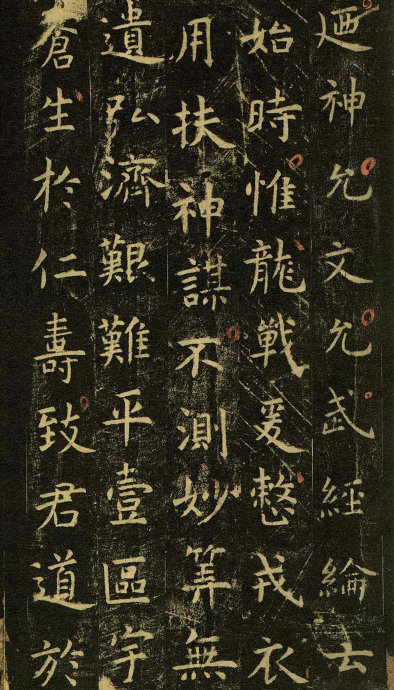
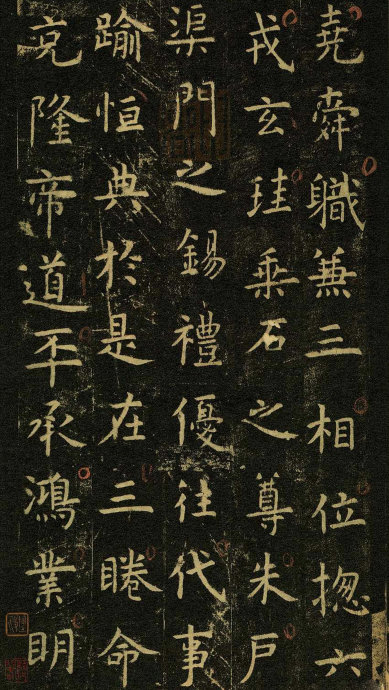
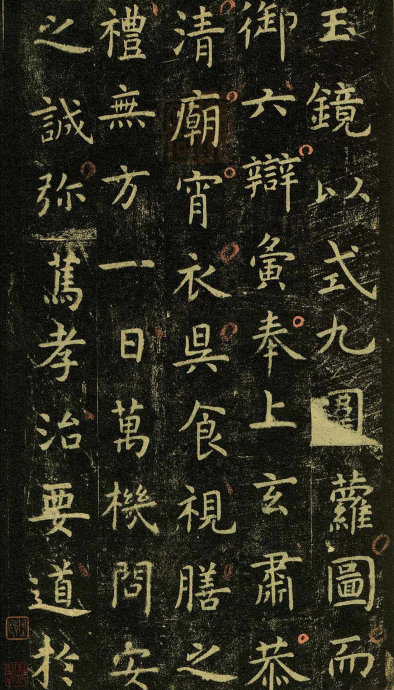
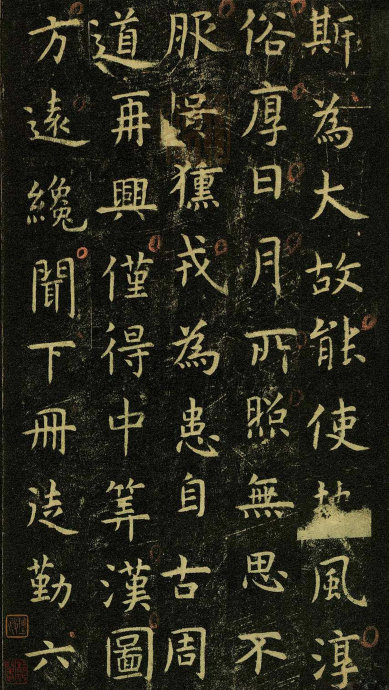
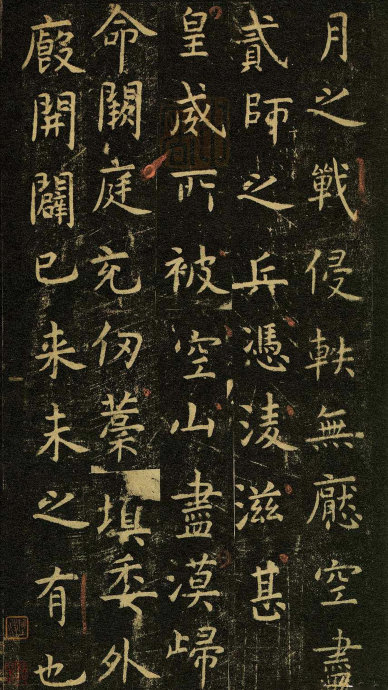
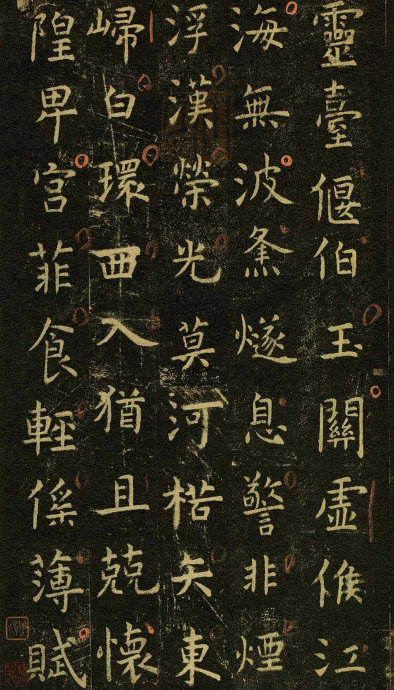
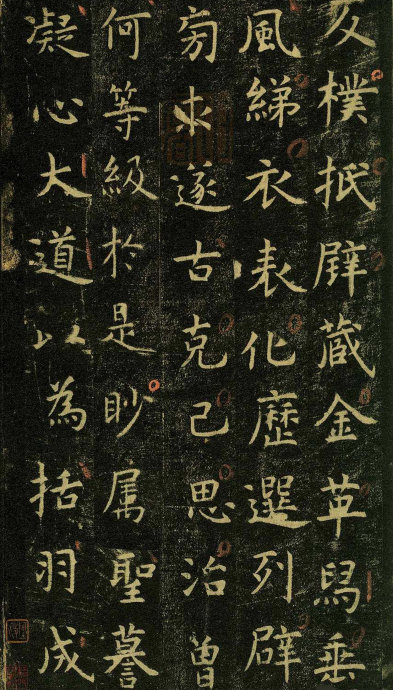
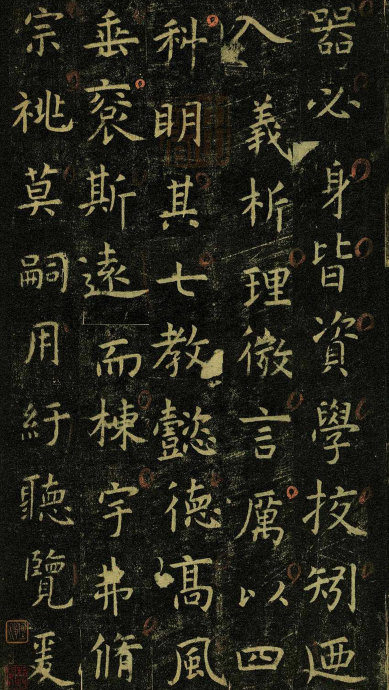
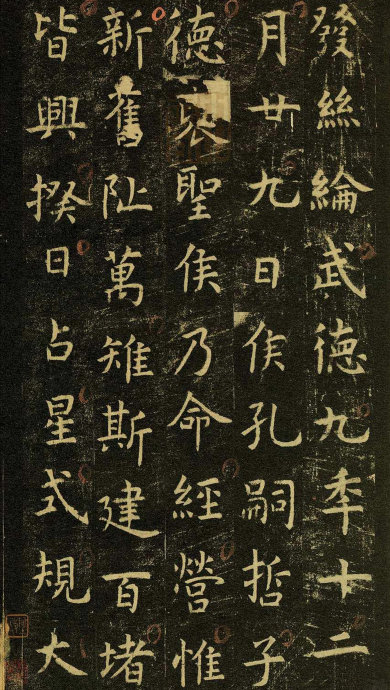
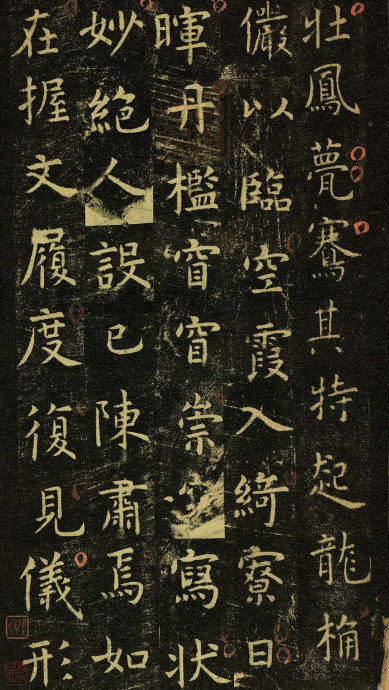
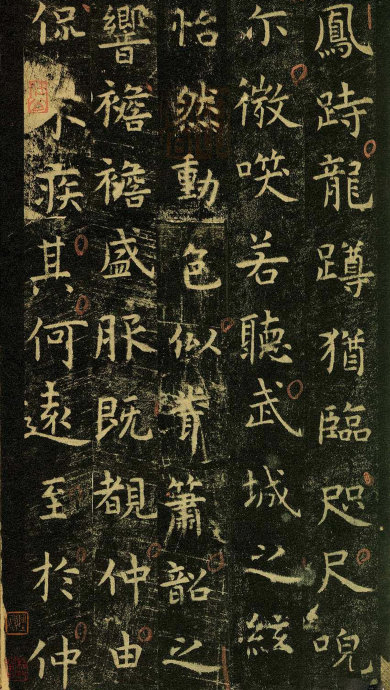
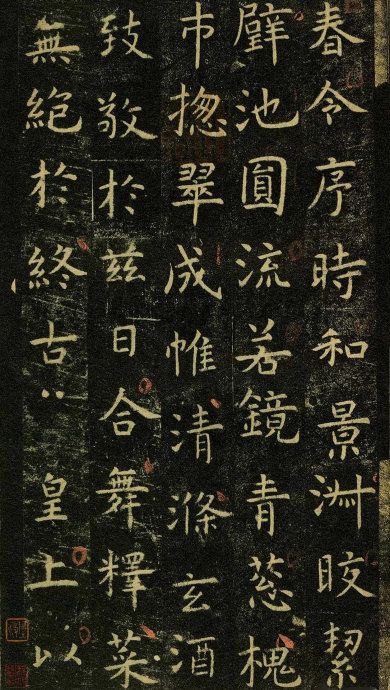
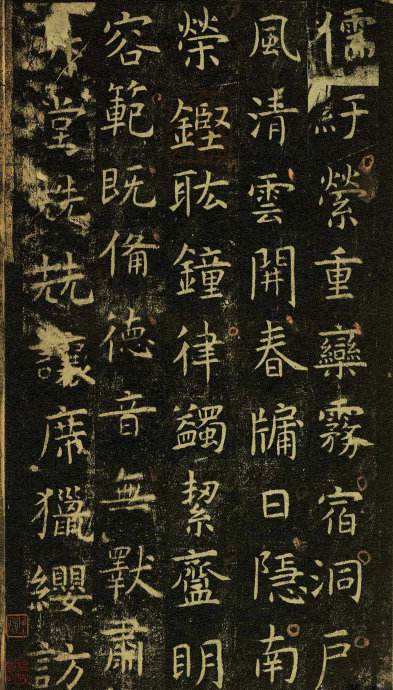
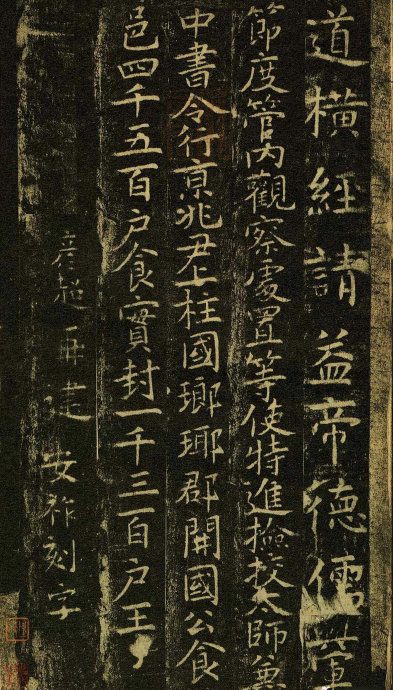
The artistic characteristics of Yu Shinan's "Confucius Temple Stele"
1. The writing style of "Confucius Temple Stele" by Yu Shinan
"Summary of Calligraphy": "When it comes to calligraphy in the Tang Dynasty, Ou Chu belongs to the northern school and Yu belongs to the southern school. He calls the northern school the original official because he wants to respect Ou Chu. However, Yu Zheng has his own jade tendon meaning in seal script, especially Those who advocate northern writing refuse to talk about it." The phrase "there is a jade tendon meaning in seal script" reveals the secret of Yu Shu's pen. Yu Shu's pen is sharp and his strokes are unrestrained and elegant, adding great tension and elasticity to the lines.
"Book Summary" also says: "Yongxing's calligraphy comes from Zhiyong, so it is not only bright and sharp, but also connotative." Dong Qichang said: "Yu Yongxing once said that he had enlightenment on the word Tao. The sharp edge on the hair of the pen is like a knife cutting off water, which is the same as the leak mark in the sand house drawn by Yan Taishi." "Fangjian Pavilion Inscription and Postscript": "right There are no traces of the methods used in the army, but the uncle used them."
The stipple painting of "Confucius Temple Stele" is very simple, but not simple. At first glance, it seems that there is no "technical content". He starts to write with his sharp edge and then closes it with his sharp edge. Observing her lines carefully, she looks like a natural beauty who does not put on any makeup or ornaments, but is restrained, dignified and elegant. Especially some of the main strokes, such as long strokes and long strokes, are refreshing and vigorous; the horizontal folds are made by turning the brush strokes, and the lines are thick and vigorous, which is the best interpretation of "soft on the outside and strong on the inside", all of which are thanks to the seal script French pen. There are only a few seal scripts used in Tang Kai script, but it is even rarer to use it so skillfully and freely as Yu Shinan used it in "Confucius Temple Stele".
Yu Shinan has an incisive discussion on the use of the pen in the chapter "Bi Xu Lun. Qimiao": "The pen is a metaphor for water, and the square and circle are metaphors for characters. They are the same when viewed at a distance, but they are different when viewed far or near, so Mingzhu fonts are used." He believes that, The font (shape) is impermanent, just like a vessel filled with water that can be square or round, and the pen should follow the square or round shape just like water. Only in this way can we "unify the wonderful" and achieve the unity of "quality" and "trace", which is consistent with The law of "Yin and Yang give rise to movement and stillness, and all things take shape." What a wonderful "pen metaphor for water", Tao uses the essence of the pen.
The overall writing style of Yu Shinan's "Confucius Temple Stele" belongs to the Shangyuan genre, which is round and full of charm; the style is square, square and not exposed. If the pen is round and the body is square, it is called Qiu; if the body is square and the body is round, it is called Yi. Just as Zhao Huanguang said in "Hanshan Broom Talk": "Yu Shinan is the best in writing, with a straight front and a round shape, and a good structure." Very precise and precise.
2. The structure of Yu Shinan’s “Confucius Temple Stele”
A major feature of Yu's calligraphy is that it is horizontal and vertical. Zhao Huanguang's "Hanshan Broom Talk": "The characters before Tang Ji began to have music, and the characters after Tang Ji began to open the door to music." The vertical and horizontal characteristics of Yu's calligraphy are precisely the inheritance of the rhyme of the Wei and Jin Dynasties, and are consistent with the style of the Wei and Jin Dynasties. The other three artists of Yu Shinan's contemporaries who are also known as the "Four Masters of the Early Tang Dynasty" either seek novelty with "qu" or win with "precipitousness"; they try their best to achieve their best. The horizontal and vertical features of Yu's calligraphy are precisely due to the fact that in "Bi Xu Lun" and "Qi Miao", "the heart is upright and the Qi is harmonious, and the Qi is in harmony". "Harmony" means "center" and "zheng", which conflict with each other. Harmony is called Tao, and the beauty lies in the embodiment of the thought of inaction. In the eyes of later generations, it is "without characteristics", so Yu Shu has received little attention in later generations: there are countless articles on the techniques of Ou and Chu, but there are only a few on Yu Shu; in addition, it is easy to write horizontally and vertically on the board. It seems even more "boring". In fact, later generations only paid attention to the "horizontal and vertical" appearance of the lines, but did not pay attention to the inner "quality" of the lines. It is the so-called gentleman who hides his utensils in his body, and how can anyone without a spiritual practice see it.
The structure of Yu Shinan's regular script is "loose" and "scattered", which is actually a problem; but for "Confucius Temple Stele", it may be an advantage. In "Bi Xu Lun" and "Qimiao", Yu Shinan put forward the following point about the shape and structure of fonts: "Although characters have quality, traces are inherently inactive. They are dynamic and still due to yin and yang, and all things are shaped by the body. They express nature and change, but they are often not dominant. "The dialectical thought. From the perspective of this dialectical thinking, this "relatively" loose and "relatively" loose, calm structure fits perfectly with the text content of "Confucius Temple Stele" and well embodies the two ideals of Confucianism and Taoism. The essence of "Yi culture" derived from this is the idea of advocating harmony and advocating change.
Zhao Huanguang's "Hanshan Broom Talk": "To imitate regular script, you must follow Yu and Ou's method as the correct method. When it comes to rough calligraphy, Yu has a one-stroke method, and Ou has a one-character method. If the words are wonderful, Yu will be knotted in the heart, and Ou will be knotted in the heart. The joints of the limbs are very different. The inner part of the Yu body is slightly outside, and the outer part of the European thing is lost in the inner part. Therefore, it is natural to see the left part and the right part of the European part.”
"Yu knot is in the lungs" and "Yu specializes in the inside and outside", which are prominently reflected in "Confucius Temple Stele".
First, there are few overlaps between strokes in the characters and a lot of white space, making them appear ethereal and airy, making some characters appear particularly spacious. The second is to leave a large blank space through line changes. For example, he often makes the horizontal stroke of Baogai slightly longer to leave air for the lower part, and the frames of the characters with enclosing and semi-enclosing structures are wider. The third is to suppress the stretched space and expand the inner space of the characters. Fourth, the characters in the left and right structures are intentionally spaced apart and left blank. For almost every character, he will expand and contract strokes, deform strokes, and adjust the density of strokes to create contrast and create blank spaces based on the font type. Most of the "white" areas are connected. The strong and moist lines create a contrasting relationship with the "white space". Those connected "white" and "black" make the overall feeling ethereal and unrestrained. As Mo Yunqing said: "Yu's calligraphy is beautiful and smooth, with good meaning and style, soft on the outside and strong on the inside. It is charming and charming." Fifth, the font is long and tall, rich in the Taoist style of immortal bones, and has a free and elegant beauty. For example: "Gu Tian Zong Yi Ti", the big "mouth" in the character "Gu" is disconnected from the upper left corner and the lower right corner and left blank, and the "white" inside and outside the character is connected into one piece; the upper left corner of the small "mouth" is disconnected Leave blank. "Weixun", the fourth stroke of the word "Wei" does not overlap with the third stroke. "It's bad luck" and so on.
3. Characteristics of pointillism in Yu Shinan’s “Confucius Temple Stele”
The horizontal and vertical orientation is a major feature of the "Confucius Temple Stele". Da Chongguang's "Shu Raf" "has a square grid but rounded edges, straight buildings and curved outlines, which is a masterpiece". This is the best explanation of the role of horizontal and vertical characters in regular script. "The grid is square but the edges are round" means the frame is square and the edges are round. "Dong" means pillars. The horizontal and vertical strokes in a character are the pillars in a character. The pillars cannot be out of alignment or skewed. "Gang" means Gang dimension, that is, other stippling, and the space within the characters. If the pillars are tilted and the outline is bent, it will be difficult for the characters to stand up.

